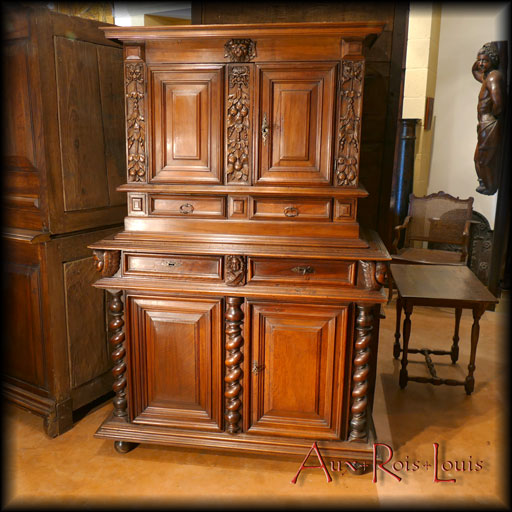Some of the furniture and pottery on this page may already have been sold. Please contact us to find out if the item you are interested in is still available.
- All
- “Arbalete” commode
- “Mélard” jar
- “Sauteuse” commode
- “Tombeau” commode
- 15ᵗʰ century
- 17ᵗʰ century
- 18ᵗʰ century
- 19ᵗʰ century
- Andirons
- Antics
- Antique pottery
- Aquitaine
- Armed chair
- Auvergne
- Aveyron
- Barrel
- Bed
- Beech
- bench
- Bonnetière
- Bourgogne
- Buffet
- Bureau de milieu
- Cake mold
- Cantal
- Cast iron
- Cast iron vat
- Castle furniture
- Chair
- Chandelier
- Charentais
- Cherry wood
- Chestnut
- chimney plate
- China
- Clock
- Commode
- Confit pots
- Confiturier
- Copper
- Corrèze
- Country furniture
- Country style table
- Cradle
- Craft furniture
- Credenzia
- Curved chest of drawers
- Desk
- Desk table
- Dresser
- Early 18ᵗʰ century
- Early 19ᵗʰ century
- Executive desk
- Farmhouse table
- fireplace accessory
- fireplace bench
- France
- Furnitures
- Gers
- Giltwood
- Gironde
- Haute-Loire
- Head jug
- High Middle Ages
- Homme-debout
- Île de France
- Kettle
- Kitchen cabinet
- Kitchen furniture
- Knight Chest
- Landes
- Late 18ᵗʰ century
- Limousin
- Loire
- Lot
- Louis XIII
- Louis XIV
- Louis XV
- Louis XV Regency
- Louis XVI
- Louis-Philippe
- Mazarin
- Metal
- Midi-Pyrénées
- Mirror
- Mortar
- Oak
- Objects bearing history
- Occitanie
- Oil barrel
- Oil jar
- Oil jug
- Oil on canvas
- Pantalonnière cupboard
- Pear wood
- Périgord
- Period furniture
- Picture
- Pie dish
- Pitcher
- Pitcher
- Poplar
- Popular art furniture
- Provence
- Provincial art
- Puy de Dôme
- Quercy
- Renaissance
- Rhône Valley
- Rhône-Alpes
- Rocaille
- Sculpture
- Sideboard
- Small furniture
- South of France
- South West of France
- Stagecoach travel trunk
- Statuette
- Storage cabinet
- Storage chest
- Table
- Terracotta
- Terrine
- The treasure corner
- Tools
- Travel trunk
- Trunk
- Two-body sideboard
- Two-tiered buffet
- Ustensils
- Vat for the soup
- waffle iron
- Walnut
- Wardrobe
- Water jug
- Wedding trunk
- Wood species
- Wrought iron
Knight’s Oak Armour Chest – 15th Century – High Middle Ages – Périgord – [ME148]
AUX-ROIS-LOUIS’S TREASURES FILMING AT CHÂTEAU DE BIRON IN PÉRIGORD FOR THE SERIES ‘FORTUNE DE FRANCE’ Adapted from Robert Merle’s literary fresco, a writer native to Sarlat, the “Fortune de France” series directed by Christopher Thomson took up residence at Château de Biron, seat of one of the oldest baronies in Périgord, in spring 2023. It…
Coach Travel Chest in Leather and Wood – 18th Century – Île de France – [ME124]
The vanity one carries with them in the 18th century is made from leather, brass, and wood. These natural materials were assembled by the guild of trunk makers, with no recourse to plastics which of course did not yet exist. Let’s rediscover the charm of yesteryear’s luggage with this delicate coach travel chest in leather, brass, and wood, a surviving witness of the Renaissance’s golden days in France.
Two water jugs – 19ᵗʰ century – Midi-Pyrénées [PA036] [PA037]
Two water jugs – 19ᵗʰ century – Midi-Pyrénées Carried on the heads of women who went to fetch water from the village well or fountain, these jugs are called “head jugs”. In order to make the task less painful and less perilous, these water carriers made a straw wreath wrapped in fabric which they placed…
Globular Melard with Spout – 18th Century – Puy de Dôme – [PA088]
Presenting a splendid mélard originating from an Auvergne pottery centre in the 18th century. It was suspended in a pantry for the convenient pouring of precious walnut oil, commonly used for lighting during that era.
Studded Travel Trunk – 18th Century – China – [ME126]
Who can decipher the sinograms traced on this precious travel trunk, tossed about in the Chinese mountains in the 18th century? For now, it keeps its secrets and its beautiful Chinese red patina inside.
French chest of drawers in walnut – 18ᵗʰ century – Rhône Valley – [ME031]
French chest of drawers in walnut – 18ᵗʰ century – Rhône Valley This dresser is called “sauteuse” because of the height of its feet slightly curved. Rarissime because of its small intimist proportions, it sports at the same time very rich Regency patterns designed by Jean Bérain, an ornamentalist of the eighteenth century who was…
Three terracotta melards – orange, green and yellow – 19th century – Puy-de-Dôme – [PA064 PA065 PA066]
PUY-DE-DÔME: LAND OF POTTERY AND VOLCANOES SINCE THE NIGHT OF TIMES It is on the ground of a thousand-year-old tradition that these three beautiful melards of varying proportions and colors were created. It should indeed be remembered that in the center of Auvergne, at the beginning of the Christian era, the black earths of the…
Monoxyl Poplar Barrel – 19th Century – South West – [MP055]
Aged in a monoxyl poplar barrel, this is what the famous homemade prune brandy could boast of before delighting palates at the feast…
Oak countryside table-desk – 19ᵗʰ century – Sarlat district in Périgord Noir – [MP053]
This countryside “bureau” has all the distinctive features of those used in th XIXth century to collect the “octroi” when goods arrived in towns on market day. Its rustic solid oak structure rests upon a H-shaped stand off. It has a large drawer one could keep receipts and money.
Polychrome Walnut Virgin with Serpent – 18th Century – Midi-Pyrénées – [ME116]
Explore the iconic 18th-century polychrome walnut sculpture depicting the Virgin Mary triumphing over a serpent, symbolizing the Immaculate Conception. Standing gracefully with arms wide open on a half-globe, the Virgin crushes the serpent beneath her bare foot. The finely carved piece showcases intricate details, from the peaceful expression on Mary’s face to the polychromatic hues highlighting the mystical nature of the artwork. Uncover the hidden symbolism as the serpent holds an apple, representing the Virgin as the new Eve who, in the 17th century context, erases the transgressions of the first woman. The dimensions of this masterpiece are 56 cm in height, 32 cm in width, and a diameter of 21 cm. [Reference: ME116]
Bronze Chandelier – Louis XIV – 17th Century – Quercy – [ME117]
In golden bronze, this midsize chandelier can hold candles at the top of the four candle holders that top its branches. As was practiced in the 17th century, four small vessels are arranged in the center to receive walnut oil and wicks to complement the original lighting setup. Below, a bowl is ready to absorb any potential overflow.
Two tier Louis XV buffet in cherry wood – 18ᵗʰ century [ME004]
Two tier Louis XV buffet in cherry wood – 18ᵗʰ century Decorated with moldings Decorative flowers Inner door to store tablewear Arched cornice Hoof feet Two tier Louis XV buffet in cherry wood – 18ᵗʰ century Decorative flowers. Inner door to store tablewear. Arched cornice. (Traverses mouvementées) Hoof feet. Référence : ME004 I am interested in purchasing…
Oak and Embossed Leather Armed chair – Louis XIII – 17th Century – Aquitaine – [ME128]
17th-century Louis XIII armed chair with Cordovan embossed leather seat and back adorned with polychrome motifs of flowers, fruits, and birds.
Oval walnut table – Louis XIII – 17th century – Southwest – [ME127]
Oval walnut table Louis XIII, commissioned for a noble house in the 17th century in Aquitaine.
Two oil jugs – 19ᵗʰ century – Périgord – [PA053] [PA054]
Two oil jugs – 19ᵗʰ century – Périgord Both from the famous pottery center of Beauregard-de-Terrasson, these two oil jugs have well-known distinctive signs. The first, on the left in the overall photo, presents a wine-colored glaze obtained thanks to manganese oxide, manganese being a natural metal extracted from Perigord soil since prehistoric times. The…
Larch wood table for cracking walnuts (énoisage) – 19th century – Haute-Loire – [MP051]
A thick larch plateau from the foothill forests of Velay and, on each corner, kinds of amazing little hollows…Here we have a genuine “énoisage” table, perfectly designed to wedge the walnuts when snapping them with the mallet called “tricote”, to prevent the nuts from rolling to the other end of the table.
Cherry Wood Salon Table – Louis XIV – 18th Century – South West – [ME112]
This elegant Louis XIV cherry wood salon table was commissioned in the 18th century for a castle in Périgord. Discover its moulded balustrade base, typical Louis XIV blackened mouldings, and spacious drawer.
Church Steeple Rooster in Copper – 19th Century – Languedoc-Roussillon – [MP050]
Discover the extraordinary power attributed to the church steeple rooster – a demon-chaser chosen by Pope Leo IV in the 9th century to grace our church steeples. A truly rare find, this all-copper rooster has descended briefly, ready to safeguard your home.
Glazed Terracotta Oil Barrel – 19th Century – Saintonge – [PA080]
This walnut oil barrel originates from the famous La Chapelle-des-Pots pottery center in the ancient province of Charentes, known as Saintonge. Exclusively crafted in Saintonge from the Middle Ages onward, these barrel-shaped potteries reserved walnut oil for household lighting, using the beautiful local clay.
Fireplace Bench in Oak and Chestnut – 19th century – Auvergne – [MP049]
The throne of the Auvergne “cantou,” the famous fireplace bench where people crowded to warm up, here it is, authentic and proud, crafted with beautiful oak and chestnut planks.
Musketeer and Elegant Lady – Oil on Canvas – 19th Century – [ME122]
Here is a small oil painting on canvas of great finesse. It depicts a delicate gallant scene where a Musketeer, with an Elegant Lady on his arm, manages to have a bird perch on his hand. The characters seem bathed in light in a forest setting that, by contrast, seems to slide into the fallen night.
Oak Dining Table – Louis XIII – 17th Century – Corrèze – [ME107]
This Louis XIII dining table originates from the Château de Turenne in Corrèze. In the 17th century, comfortable furniture was a privilege reserved for the nobility. While household staff dined standing at a high serving table, the masters of the house and their guests could comfortably sit around this oak table.
Little Gilded Wooden Mirror – Louis XIV – 18th century – Midi Pyrénées – [ME 110]
This little Louis XIV gilded mirror is an example of the extraordinary mastery and savoir-faire of the maîtres miroitiers of the 18th century. These stucco plastered floral motifs, its guillochées surfaces, its pare close structure and the original central mirror make it a perfect companion in a cosy intimate boudoir.
Three water jugs – 19ᵗʰ century – Périgord – [PA033] [PA034] [PA035]
Three water jugs – 19ᵗʰ century – Périgord These three water jugs come from the pottery center of Beauronne-Douzillac, which is easily recognized by the nature of the clay used: a white clay, loaded with kaolin. Most of the production of this renowned center has a green glaze, like the pottery in the background [PA035],…
Kettle, Pie Dish and Decaliter Jug in Red Copper – 18th century – South West – [MP035] [MP036] [MP037]
It’s a bit like Gulliver’s dinette. On our scale, a huge teapot, a generous pie dish and a colossal milk jug. In reality, these everyday objects, hammered from sheets of red copper, have known the good times of a large wine-growing family in the Médoc in the 18th century. She used it for cooking, bathing and selling wine.
Louis XIII kitchen cupboard 17ᵗʰ century – Haute‑Loire – [MP002]
Louis XIII kitchen cupboard 17ᵗʰ century – Haute‑Loire This softwood cupboard used to take pride of place in the kitchen. A unique feature is its spacious drawers for storing bread. Beneath the drawers there is a pull-out breadboard. The doors have skeleton locks with a superb mechanism. The locks and knobs are the authentic originals.…
Walnut Reception Table in Louis XIII style – 19th century – Périgord – [ME092]
What illuminates this large elegant table is its warm and clear patina, your honey, which warms both its 2 m long top and its entire base.
Louis XIII Manor Table in Oak – 17th century – Corrèze – [ME091]
On the four legs of this beautiful dining room table, one can see wood turning reminiscent of the beginnings of the Louis XIII style. The central base of the crosspiece is reinforced by a support called “the fifth leg.”
Gilded Wooden Rococo Mirror – Louis XV – 18th Century – Provence – [ME111]
Gilded Rococo mirror crafted from wood, resonating with the essence of Provence and the quintessential Louis XV style. Originating from the 18th century, it has remarkably withstood the test of time. Its mercury glass and wooden frame coated with gold leaf gilding using the Armenian bole are both original features.
Natural Oak End-of-Bed Chest – 18th Century – South West – [MP046]
It carries the aroma of beeswax that has permeated its natural oak since the 18th century, the era of its birth – a symbol of the union of a young couple whose initials were M and P… This end-of-bed chest is eagerly waiting to return to a room where love will reign, where love will be the law, etc.
Petrified Oil Jar – 19th Century – Saintonge / Charente – [PA077]
Statufied and adorned with an emerald scarf, its gentle belly fears no ravages of time. On the contrary, it enhances it, turning this Charente pottery into a star jar, or dare I say, an authentic oil of the upscale districts.
Wedding Chest in Larch Wood – 18th Century – Haute-Loire – [MP048]
Here is an authentic Auvergne piece of furniture, a testament to the folk art as it manifested itself in the 18th century in the southeastern part of the Massif Central. This is a wedding chest assembled with thick larch wood planks, adorned with naive ornamentation inspired by the stylistic repertoires of Louis XIII and Louis XIV.
Bell Bronze Pie Dish – 19th Century – Southwest – [MP043]
Do pies baked in a pie dish cast from the same bronze as a church bell, on the very same day, carry the scent of holiness? You can find out by testing this exceptionally rare object, an authentic bell bronze pie dish, ready to ensure the most traditional cooking on a wood fire tripod.
Two Twisted Walnut Columns – 18th Century – Midi-Pyrénées – [ME105]
Here are two impressive twisted walnut columns from the 18th century. Initially, they adorned the base of the monumental staircase in a public building located in the Midi-Pyrénées region. Now, they are prepared to enhance the charm of a film set or a private residence.
Small Cherry Farm Table – 19th Century – South West – [MP047]
With its elegantly refined legs, this small South West farm table truly stands out with pride!
‘Le saut de l’Ange’ – Oil on canvas – 18th century – Italy – [ME102]
Vertigo of love or temptation of the void, this beautiful oil painting in baroque style allegorically associates these two interpretations of the ‘The Angel’s Leap’, which, in either case, is not innocent.
Mortar and pestle in beech wood – 18th century – South-West of France – [MP039]
Mortar and pestle in beech wood – 18th century – South-West of France The pestle of this mortar is held with two hands, and the force exerted to crush chestnuts, for example, is increased by the nails planted on its end. Dimensions: Height: 67 cm, diameter: 38 cm, receptacle depth: 42 cm. Reference: [MP039] {{…
Country chest of drawers in cherry wood – 18ᵗʰ century – Périgord – [ME080]
She is a bit like a beautiful country girl who would have put on her prettiest dress to go to the ball. This chest of drawers, made from generous planks of cherry wood, in Périgord in the 18th century, proudly displays the assets of Louis XV charm. Curved front and refined handles form the adornment of our young beauty.
Small two-piece walnut sideboard – 18ᵗʰ century – South West France – [ME073]
It has everything of a great, namely all the attributes of the Louis XIII style, with the advantage of being of reasonable size. This small two-piece sideboard, commissioned in the 18th century by a rich farmer from the South West, is about to do wonders in our contemporary kitchens.
Walnut bonnetière – Louis XIV – 17ᵗʰ century – Périgord – [ME082]
The audacious talent of the furniture carpenter who fashioned this bonnetière in Périgord in the 17th century lies in the fact that the hollow uprights, on either side of the facade, hug all the greasy moldings of the lower picture rail one by one as well as all those of the upper cornice.
Oak farm table – 18ᵗʰ century – Cantal – [MP031]
This Auvergne oak farmhouse table tells the story of the country where it was born. It is made of a very dense light oak due to the harsh climate of Cantal, where it has courageously grown.
Pitcher – 19ᵗʰ century – Auvergne [PA009]
Pitcher – 19ᵗʰ century – Auvergne Dimensions: height 37 cm. Price: on demand. Reference number: PA009
Oil jar – 18ᵗʰ century – Auvergne [PA008]
Dimensions: height 39 cm. Reference number: PA008
Large Louis XV mirror – gilded wood – late 18ᵗʰ century – Midi-Pyrénées – [ME084]
Large Louis XV Mirror – Gilded Wood – Late 18ᵗʰ Century – Midi-Pyrénées The imposing frontispiece of this Louis XV mirror seems to have been sculpted to the size of the generous cornucopia that flourishes in the middle. Symbol of fecundity and fertility, it is highlighted by a checkered background of diamonds, all punctuated in…
Desk table in oak and chestnut – Louis XIII – 17th century – Quercy – [ME074]
Desk table in oak and chestnut – Louis XIII – 17th century – Quercy Given the rarity of this type of table that served as a desk, one can imagine that this piece of furniture from Quercy experienced the heyday of river transport on the Lot during the 17th century. This desk table was probably…
Louis XV mirror – giltwood frame – late 18ᵗʰ century – South of France – [ME083]
Louis XV Mirror – Giltwood Frame – Late 18ᵗʰ Century – South of France Fantasy shines in this Louis XV mirror thanks to the emergence of the Rocaille style. Its particularity, breaking with symmetry, is particularly visible in the escalation of very different acanthus leaves on either side of the summit medallion. The rinceaux inspired…
Louis XV mirror – gilded wood – 18ᵗʰ century – South West – [ME085]
Louis XV Mirror – Gilded Wood – 18ᵗʰ Century – South West of France Discreetly sized, this Louis XV mirror features a lovely scallop shell on its slightly curved pediment, framed by foliage and flowers. Through the gold leaf gilding of its frame, due to its age, the famous “bol d’Arménie” (bolus armenus) emerges, testimony…
Pantalonnière cupboard in cherry wood – Louis XIV – 18ᵗʰ century – Gironde – [ME044]
Pantalonnière cupboard in cherry wood – Louis XIV – 18ᵗʰ century – Gironde – [ME044] Served by a remarkable cabinet making, this large cabinet is called “pantalonnière” because its basement conceals a drawer specifically devoted to the flat storage of pants. Two other drawers are housed inside, halfway up. This cabinet is based on opulent…
Rocking cradle in cherrywood – Louis-Philippe – 19ᵗʰ century – South West – [ME072]
B like Bassinet, Emblem of BLM, Baby Liberation Movement If the BLM – Baby Liberation Movement – existed, the rocking cradle would be its flagship. It is indeed thanks to this small private bed that the babies were able to leave their panoply of mummy tightly wrapped in bandages and the already too crowded family…
Waffle mold in wrought iron – 18th century – Périgord – [MP032]
With this type of waffle iron shaped by a blacksmith from Périgord in the 18th century, you could cook not waffles but deliciously crunchy wafers, whose dough was made of wheat flour mixed with milk, butter and sugar It was necessary to have the right dexterity to, once the ladle of dough poured on the…
Small vat for the soup in cast iron – 17ᵗʰ century – Fonderies du Périgord – [ME077]
This type of vat was used to prepare soup during major harvests in important agricultural areas. Imagine up to forty people working in the fields. It is a question of feeding them copiously twice a day. This large pot was placed on a masonry hearth established in a rustic kitchen. All these brave peasants came…
Cast iron fireback – Louis XV – 18ᵗʰ century – South-West – [ME079]
We notice its pretty central cartouche formed of acanthus leaves surrounded by a beaded molding around which appears the date “1764” (1 and 6 inscribed in mirror) as well as a series of seven flowers. The whole being enhanced with a gadrooned molding. Reference: [ME079]. Dimensions: width: 62 cm, height: 74 cm, thickness 3 cm.…
Firebacks – 16ᵗʰ, 17ᵗʰ, 18ᵗʰ and 19ᵗʰ centuries – Périgord foundries [ME024, ME026, ME027, ME079]
Firebacks – 16ᵗʰ, 17ᵗʰ, 18ᵗʰ and 19ᵗʰ centuries – Périgord foundries Références : ME024, ME079, ME026, ME027.
Cast iron andirons – 18ᵗʰ century – Périgord – [ME062]
Cast iron andirons – 18ᵗʰ century – Périgord – [ME062] The andirons are a warm welcome to your “life after”. In the evening at the vigil, it is sweet to be able to contemplate solid andirons. While many of us are rediscovering the charm of country houses where the “pleasure fire” warms and fascinates us,…
Walnut sideboard – 18ᵗʰ century – South-West – [MP030]
This sideboard offers us a rare vision: that of the three styles Louis XIII, Louis XIV and Louis XV brought together in a single creation. The sliding drawers adorned with diamonds are in the Louis XIII style The moldings that occupy the entire extent of the uprights and crosspieces framing the doors evoke the Louis…
Louis XIII credenza in walnut – 17ᵗʰ century – South-West – [ME071]
For those who love the austere charm of the castles of the Kngdom of France in the pure Louis XIII style, before the influence of the Italian Renaissance intervened, this credenza is a centerpiece. It give evidence to a precise temporal parenthesis, that of the sedentarization of the knights who will begin to provide in…
Oak wedding chest – 18th century – Auvergne – [MP028]
Flowers, passion, a dowry and its sheath Here is how this piece of furniture appeared in Auvergne in the 18th century. Prelude to the wedding, the engagement makes it possible to organize as it should, the imminent arrival of the bride in the family of the groom, under the condition of a dowry made at…
Walnut pantry cabinet – 19th century – Provence – [MP026]
Walnut pantry cabinet – 19th century – Provence Called in its region of origin the “mangeadou”, this cabinet was intended for the storage of food in its upper part, ventilated for this purpose. In the lower part you could store dishes and kitchen utensils. In the middle, two drawers received the cutlery. We recognize on…
Two water jugs – 19th century – Lot Valley – [PA058] [PA059]
Two water jugs – 19th century – Lot Valley Also called head jugs, because they were carried on the head by women who went to fetch water, these two water jugs were turned in the Lot Valley in the 19th century. Imagine women fetching water from the village well or fountain, to meet all the…
Two oil jugs – late 18th century early 19th century – Lot Valley, Quercy – [PA062] [PA063]
Two oil jugs – late 18th century early 19th century – Lot Valley, Quercy We recognize in the roundness of these jugs an exuberant and sensual inspiration specific to the ancient Quercy potters’ centers. Several clues seem to indicate that these two jugs come from the same workshop and probably from the same hand. The…
Walnut storage cabinet – 18ᵗʰ century – France – [ME066]
Walnut storage cabinet – 18ᵗʰ century – France You have before you the ancestor of the diplomatic bag … It is in fact in this kind of cabinet with drawers that the high dignitaries of the 16ᵗʰ and 17ᵗʰ centuries took their precious documents, cards, titles, treaties and coins of exchange, when they set out…
Mansion clock in cherry wood – 18ᵗʰ century – Périgord – [ME057]
Mansion clock in cherry wood – 18ᵗʰ century – Périgord – [ME057] FROM THE SUN TO THE WATCH, FROM PRAYER TO THE POINTEUSE, A VERY BRIEF HISTORY OF THE CAPTURE OF TIME The millennial quest for the measurement of time will free itself from the course of the Sun and the flow of water to…
Walnut sideboard with scallop shell – Louis XV – 18th century – Lot Valley – [ME067]
Walnut sideboard with scallop shell – Louis XV – 18th century – Lot Valley What jumps out at first glance, when looking at this sideboard, are the medallions of the two doors worked in projecting molding. Patterns of points, windings and curved lines describe around these medallions a skilfully convoluted rim. The lower of the…
Bourgeois jam cabinet in blond walnut – 18th century – Périgord – [ME064]
HISTORY OF THE CONFITURIER OR HOW GASTRONOMIC MORES INFLUENCE FURNITURE The history of jam cabinets coincides with that of the arrival of sugar in homes. We are at the end of the 17th century and “white gold”, until then the preserve of apothecaries who sell it at gold prices in their pharmacies, finally arrives at…
Two water jugs – 19th century – Les Landes – [PA060] [PA061]
Two water jugs – 19th century – Les Landes [PA060] Of Spanish Basque inspiration, with a washer at the top of the spout to facilitate its grip, this jug has, around the top opening, an orange-colored glazed bib. [PA061] This head jug, also from the pottery center of Castandet in the Landes, presents a glazed…
Terrine in the shape of a hare in glazed earthenware – 19ᵗʰ century – South West – [PA050]
Terrine in the shape of a hare in glazed earthenware – 19ᵗʰ century – South West – [PA050] Also called “gîte à pâté”, this zoomorphic-inspired terrine was used both for cooking and for presenting the famous hare pâté on a well-appointed table. The originality of this glazed terrine also lies in the alternation of star…
Oil jar – 19ᵗʰ century – Quercy – [PA044]
Oil jar – 19ᵗʰ century – Quercy – [PA044] This oil jar from Quercy, made of red clay, has the particularity of its trefoil pinched spout. The body is adorned with oblique bands, drawn with a decorating wheel.
Oil jug – 19ᵗʰ century – Beauregard de Terrasson [PA014]
This oil jug has a set of distinctive signs which inevitably links it to the famous pottery center of Beauregard de Terrasson in Périgord. Observe rather: it was turned in a sandstone clay, covered with a glaze of tint “wine lees” obtained thanks to the local manganese and its beak presents a bulbous form, also…
Vaisselier dresser-drainer in cherrywood – 19ᵗʰ century – South West – [MP019]
Vaisselier dresser-drainer in cherrywood – 19ᵗʰ century – South West – [MP019] Everything is scalloped curves in this discreet dresser which in fact fulfills two distinct missions. At the very bottom is the drainer on spaced slats while the three top shelves fulfill the function of display, the crockery being held by scalloped bars. In…
Oval walnut cellar table – 18ᵗʰ century – Lot – [MP017]
Oval walnut cellar table – 18ᵗʰ century – Lot – [MP017] All the charm of period furniture from the Province of Quercy is found in the flexibility of the curves and moldings of this pretty little oval table…
Walnut jumping chest of drawers – Louis XV – 18ᵗʰ century – Loire region – [ME060]
Walnut jumping chest of drawers – Louis XV – 18ᵗʰ century – Loire region – [ME060] This small curved chest of drawers, as if ready to pounce on its raised legs, is, for this reason, called a “jumping chest of drawers”. At the same time, its humped feet seem to give it a form of…
Renaissance style chest in walnut – 17ᵗʰ century – Périgord – [ME051]
Renaissance style chest in walnut – 17ᵗʰ century – Périgord – [ME051] Made in Périgord in the 17ᵗʰ century, this walnut chest uses the aesthetic codes of the Renaissance, a pivotal period between the Middle Ages and modern times. You can recognize the famous gadrooned moldings around the edge of the plateau and on the…
Mazarin desk in walnut – Louis XIV – South West – [ME049]
Mazarin desk in walnut – Louis XIV – South West – [ME049] This Mazarin Louis XIV desk has a refined base, composed of eight legs rolled up in volutes, resting on clogs. By opening the side doors, we discover six drawers themselves compartmentalized in lockers. The central door opens on shelves.
Cherry wood sideboard – Louis XV Regency – 18ᵗʰ century – Aveyron – [ME047]
Cherry wood sideboard – Louis XV Regency – 18ᵗʰ century – Aveyron – [ME047] We can detect a subtle variation of the Regency Louis XV style combining strict fidelity and well-assumed fantasy, if we carefully observe this period buffet in cherry wood shaped at the beginning of the 18ᵗʰ century. A rich and well-organized molding…
Louis XVI walnut chest of drawers – Late 18ᵗʰ century – South West – [ME045]
Louis XVI walnut chest of drawers – Late 18ᵗʰ century – South West – [ME045] This Louis XVI walnut chest of drawers, from the South West of France, excels by its sobriety. Its neoclassical style is reflected by grooves on the uprights, “sheath” feet and the molded projection on the front which creates relief.
Oil jug – Late 18ᵗʰ century – Quercy – [PA052]
Oil jug – Late 18ᵗʰ century – Quercy – [PA052] Thanks to its manganese-based glaze, this late 18ᵗʰ century oil jug has a pretty chocolate hue. Its pinched trefoil spout which marks its membership in the famous Quercy pottery is in perfect condition.
Tomb-like commode in cherry wood – Louis XV – 18ᵗʰ century – South West – [ME055]
Tomb-like commode in cherry wood – Louis XV – 18ᵗʰ century – South West – [ME055] To observe attentively the movements which animate this Louis XV chest of drawers, it is to take the measure of the feats accomplished in the 18ᵗʰ century by the cabinetmaker who was the author. It comes out of the…
Homme debout in walnut – Louis XIV – 17ᵗʰ century – Périgord-Limousin – [ME054]
Homme debout in walnut – Louis XIV – 17ᵗʰ century – Périgord-Limousin – [ME054] It is clear that this ‘homme debout’ has been entirely worked, so that there is no walnut plank treated flat. The uprights, crosspieces and door frames are in fact molded over the entire width. In addition, in the center of the…
Oak storage wardrobe – from a monastery – 17ᵗʰ century – Burgundy [MP005]
Oak storage wardrobe – from a monastery – 17ᵗʰ century – Burgundy A veritable masterpiece created by a 17ᵗʰ century “image maker” (the name attributed to wood carvers), this storage wardrobe stood proudly in a monastery that used to produce Burgundy wine. It bears witness to this noble activity with an abundance of symbols: Four…
Louis XVI walnut chest of drawers – Late 18ᵗʰ century – Sud-Ouest – [ME039]
Louis XVI walnut chest of drawers – Late 18ᵗʰ century – Sud-Ouest – [ME039] We recognize the Louis XVI style of this walnut chest of drawers thanks to the clean and slender lines of its architecture. The veneer of the top, geometric, is made obliquely from a central axis, what is called a “fern” pattern…
Mazarin desk in walnut, oak and pear – Louis XIV – 17ᵗʰ century – South-West – [ME040]
This Louis XIV desk, Mazarin style, has the particularity of having been fashioned with different types of wood. The top is in walnut, the frame is in oak, the drawers and panels are in pear wood. This cleverly thought-out assembly highlights the architecture of this “bureau de milieu”, not intended to be against a wall…
Curved chest of 4 drawers in walnut – 18ᵗʰ century – Rhône Valley [ME038]
Like most of the Rhône Valley furniture, this chest of drawers boasts a large volume to appear and impress on the occasion of the receptions organized by the notables and the merchants for this purpose. Hence a profusion of ostentatious decorations: falls of lambrequins on the uprights, eventful moldings delimiting four drawers, themselves set with…
Walnut 4-door 2-drawer sideboard – Louis XIII – Périgord [ME035]
This buffet, made at the beginning of the 18ᵗʰ century, is distinguished by its imposing size and ornamental richness. Deep moldings highlight the uprights, doors and high and low cornices. The double row of moldings which frame the drawers accentuates the decorative power of this Louis XIII facade. Reference : ME035
Oil jug – 18ᵗʰ century – Quercy [PA013]
This elegant oil jar, turned in the 18ᵗʰ century, is distinguished by its slender upward handle, its pinched spout, its gray brown glaze made with manganese and its decoration of knurled strips arranged diagonally. So many particular signs in this region of production, the Quercy, which make us perceive the inventiveness marked with pleasure of…
18ᵗʰ century cherrywood commode – South West of France [ME008]
Sturdily built on scroll feet with columns on the sides. Crossbow front. Dovetailed drawers with bronze handles.
Louis XIII two-tiered walnut buffet – 17ᵗʰ century – South West France [ME023]
Louis XIII two-tiered walnut buffet – 17ᵗʰ century – South West France The unusually diminished size of the upper cabinet makes this piece particularly appealing. This buffet is a true gem, attesting to the rigorous precision of the Louis XIII style released by the audacity of the Renaissance. The doors of the top cabinet are…

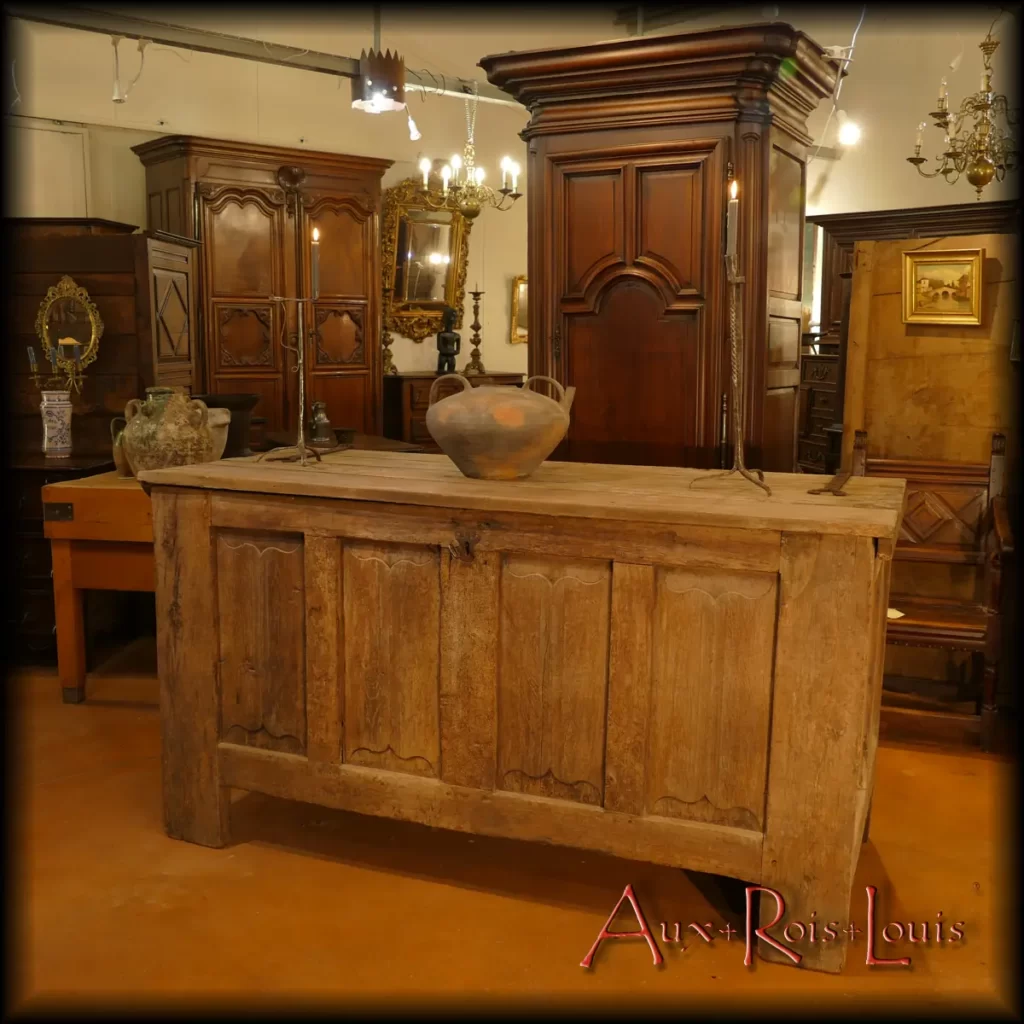
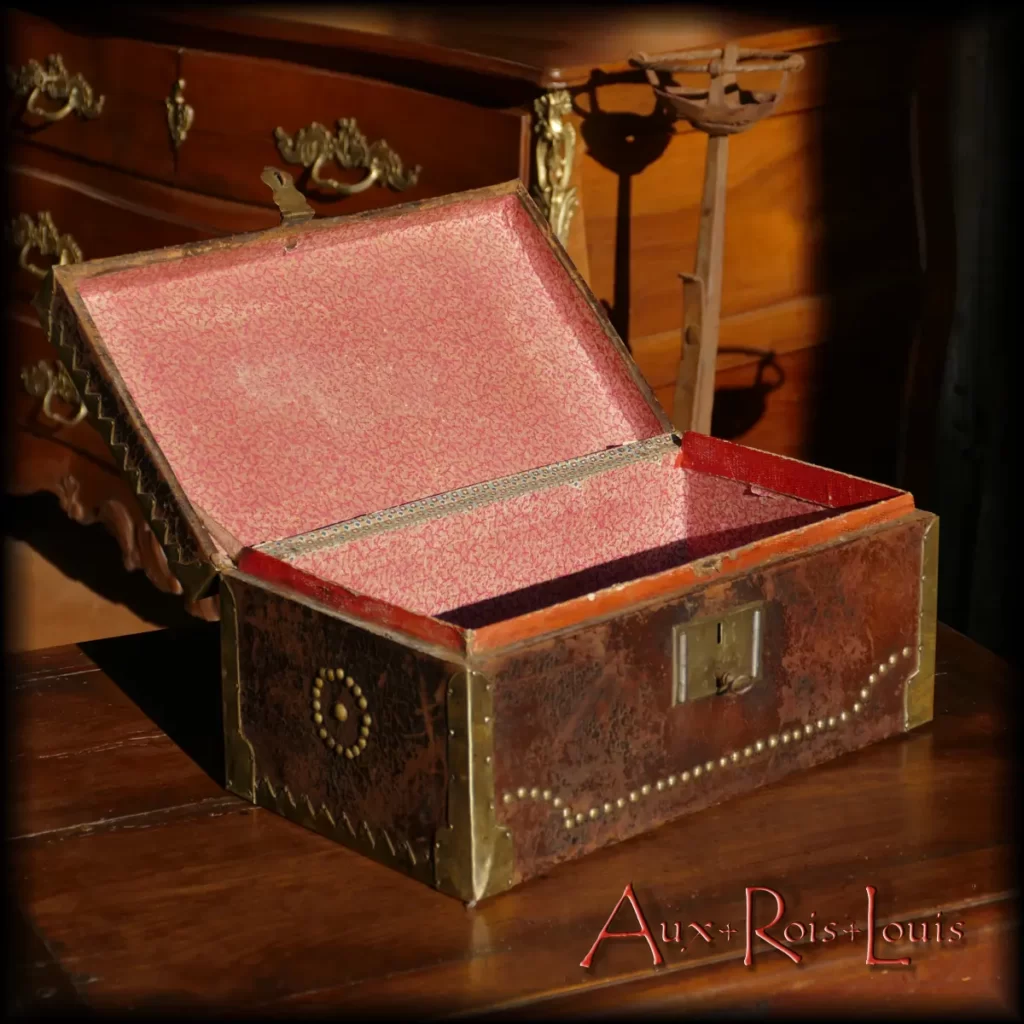
![Two water jugs - 19ᵗʰ century - Midi-Pyrénées [PA036] [PA037]](https://www.aux-rois-louis.com/wp-content/uploads/2020/08/PA036-037_617c.jpg)
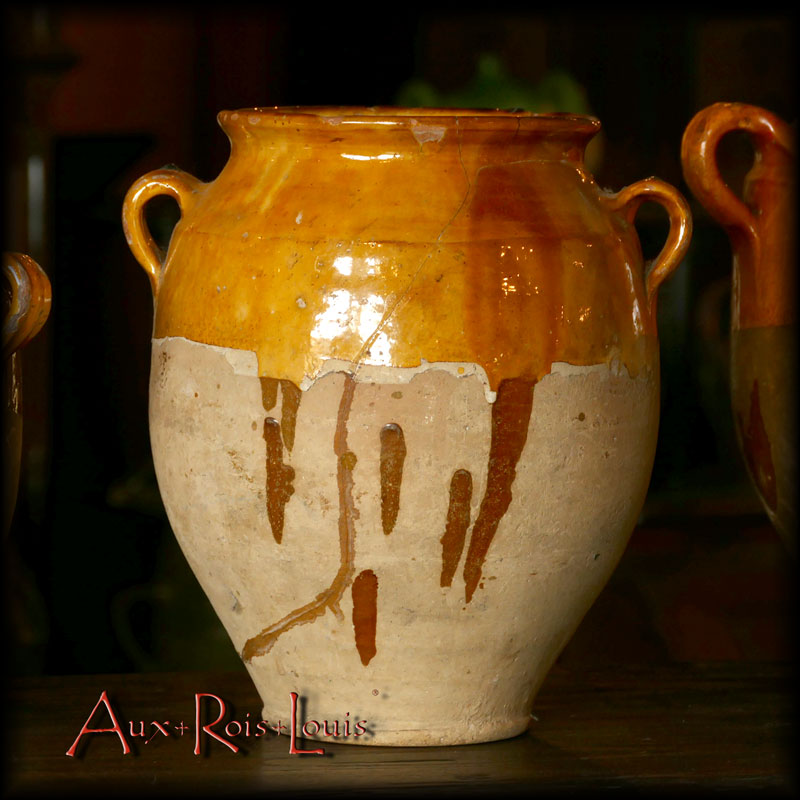
![Oil jar – Early 19ᵗʰ century – Quercy – [PA015]](https://www.aux-rois-louis.com/wp-content/uploads/2022/07/PA015_N001_P1330488c800.webp)
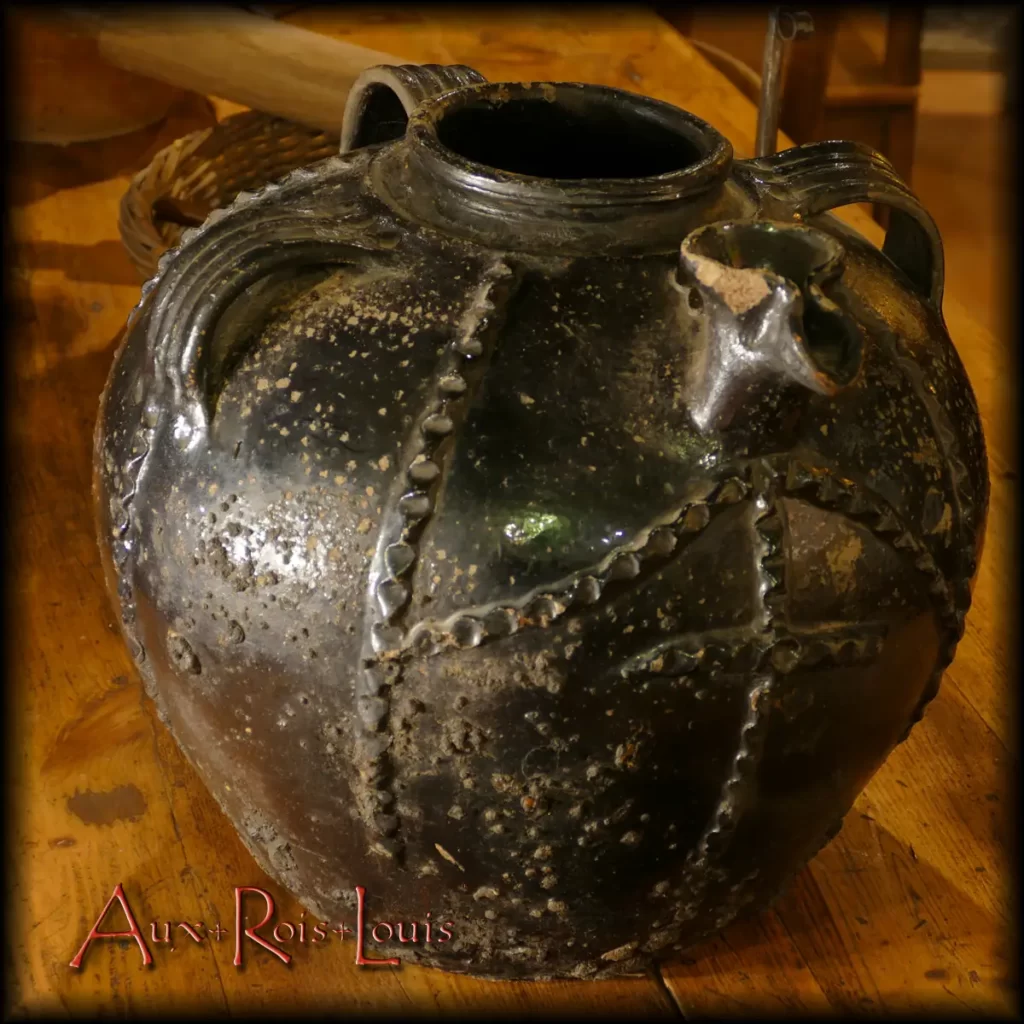
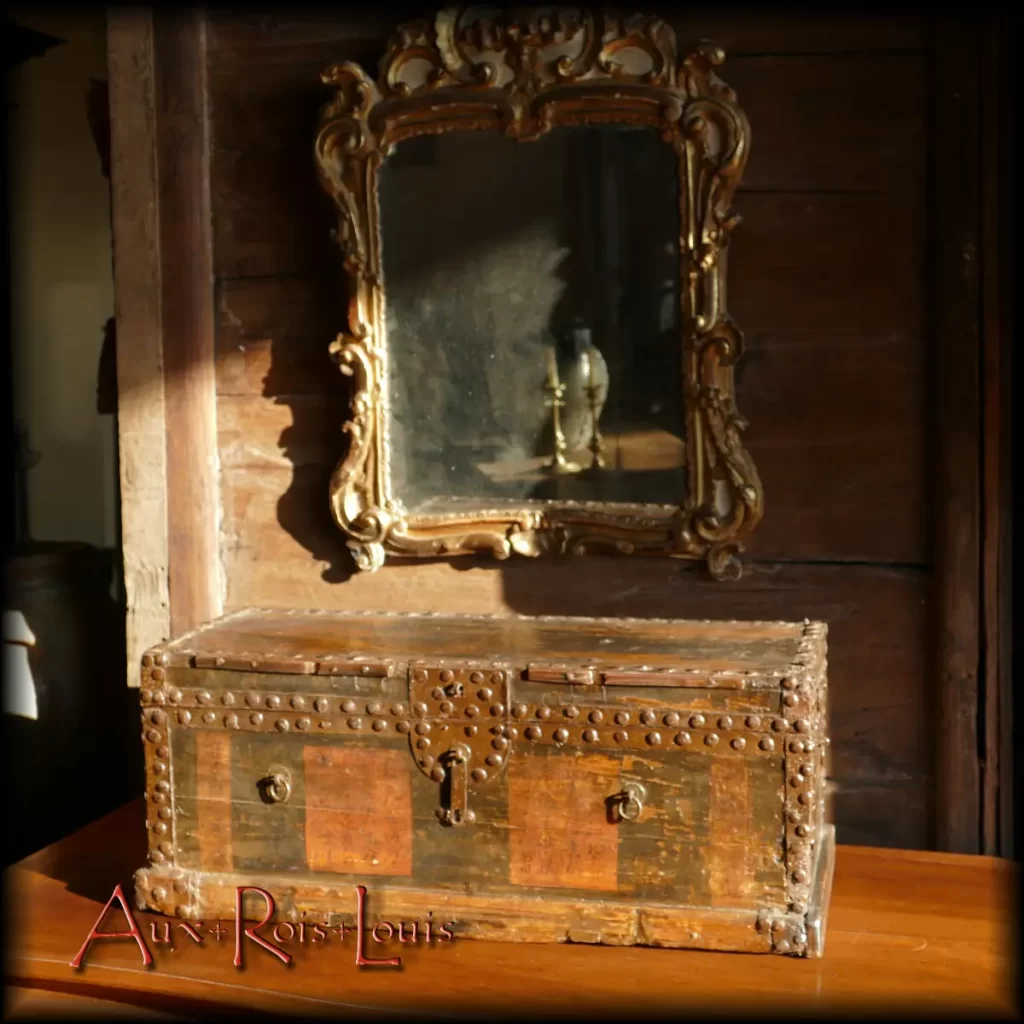
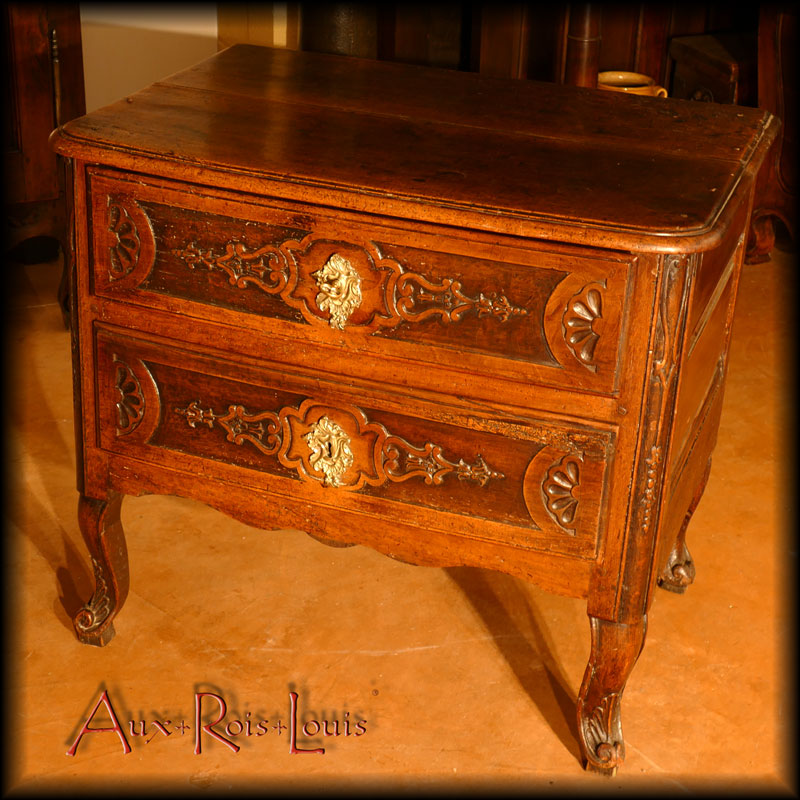
![Three terracotta melards – orange, green and yellow – 19th century – Puy-de-Dôme – [PA064 PA065 PA066]](https://www.aux-rois-louis.com/wp-content/uploads/2022/01/PA064_65_66_673-1024x1024.jpg)
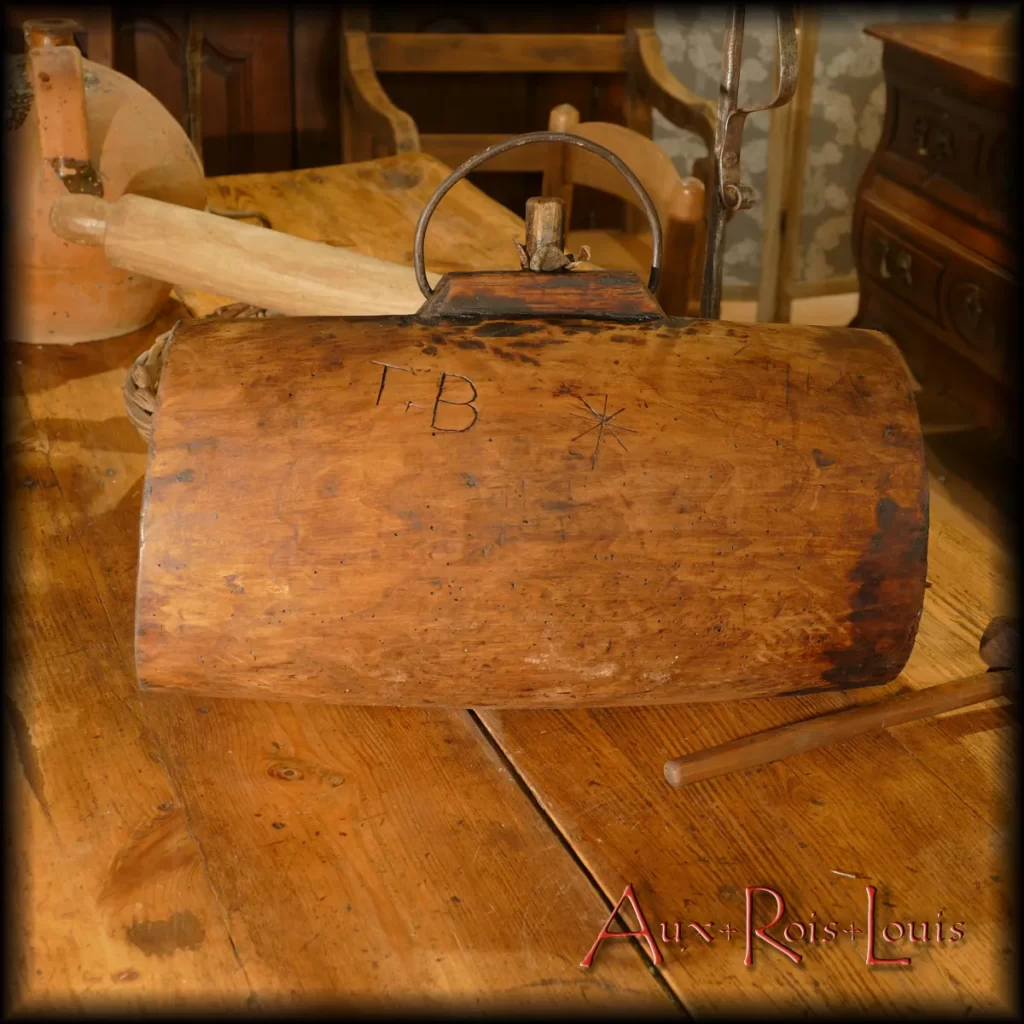
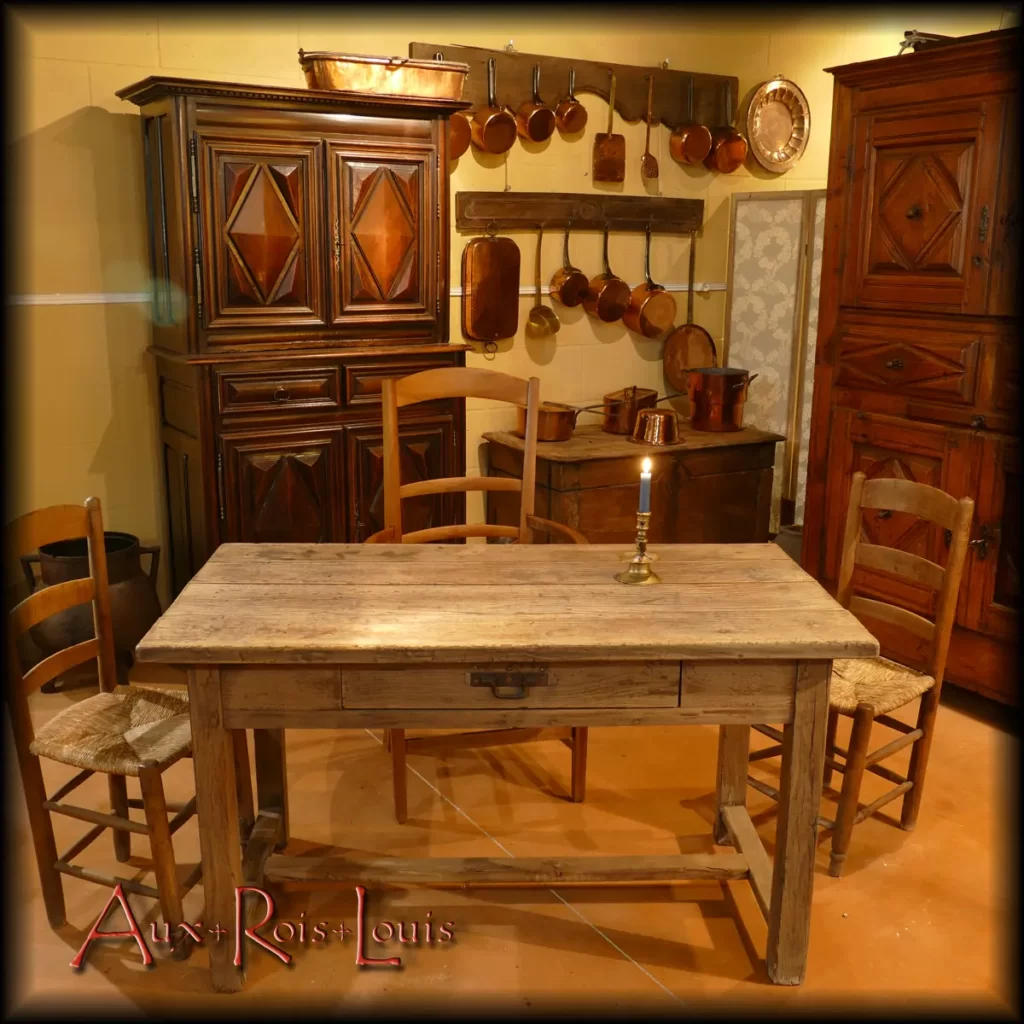
![Polychrome Walnut Virgin with Serpent – 18th Century – Midi-Pyrénées – [ME116]](https://www.aux-rois-louis.com/wp-content/uploads/2023/10/ME116_P1670078-1024x1024.webp)
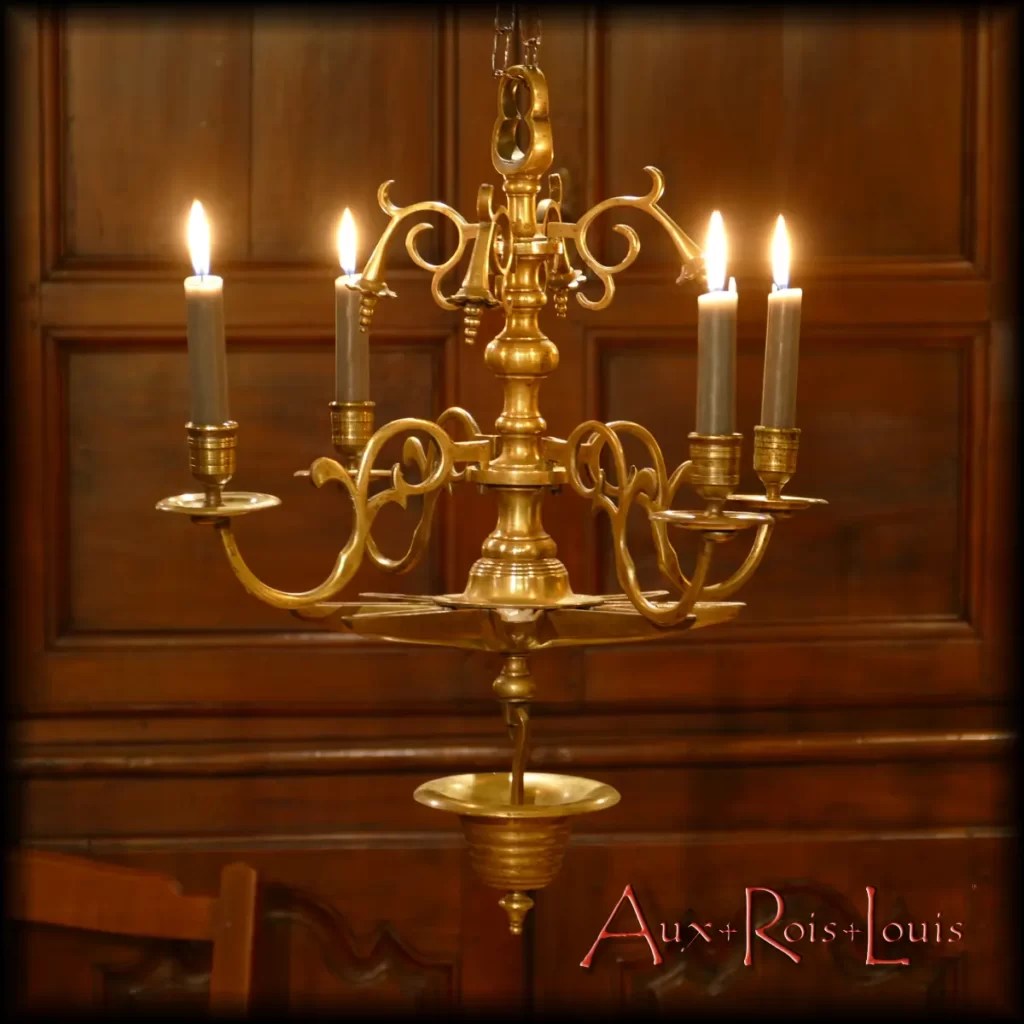
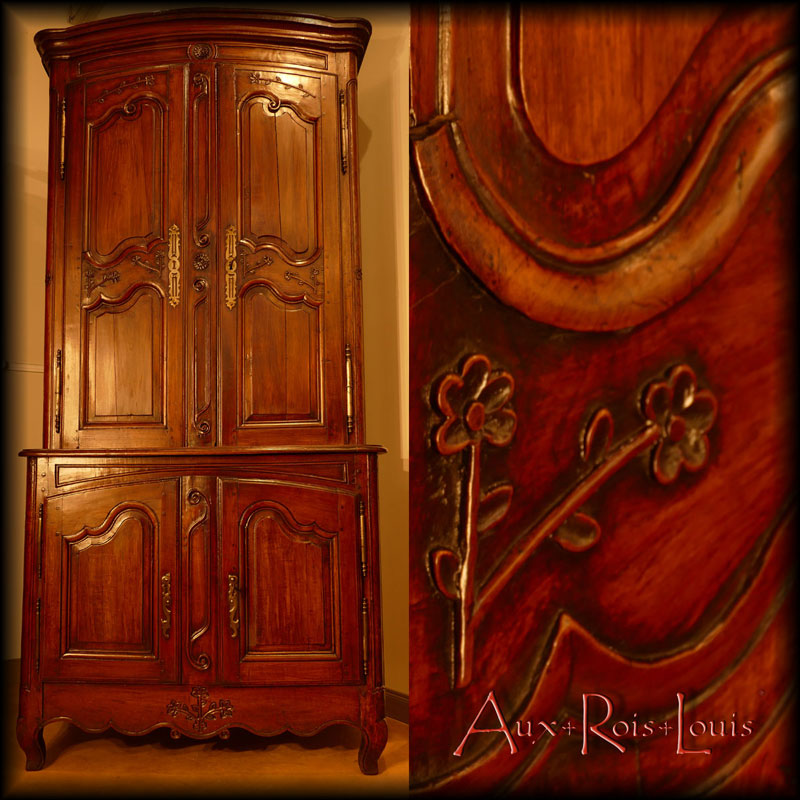
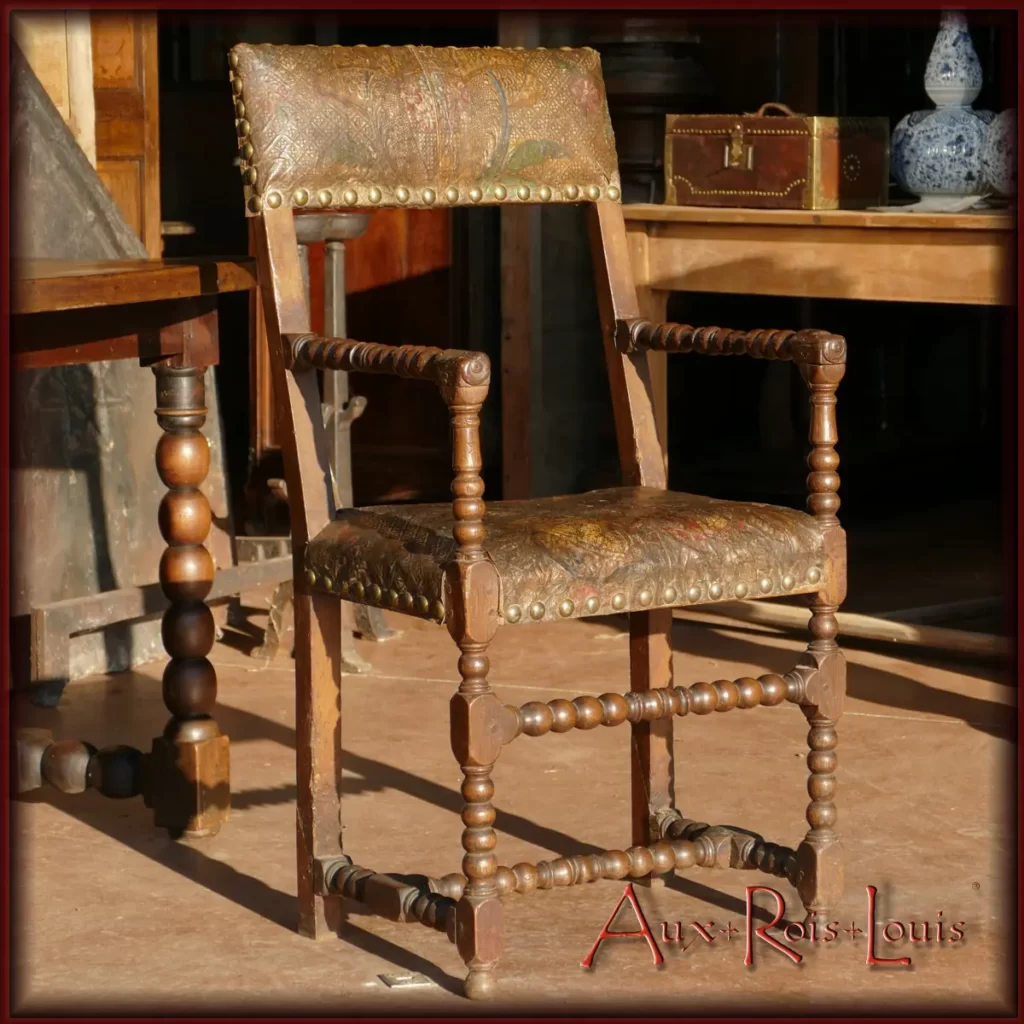
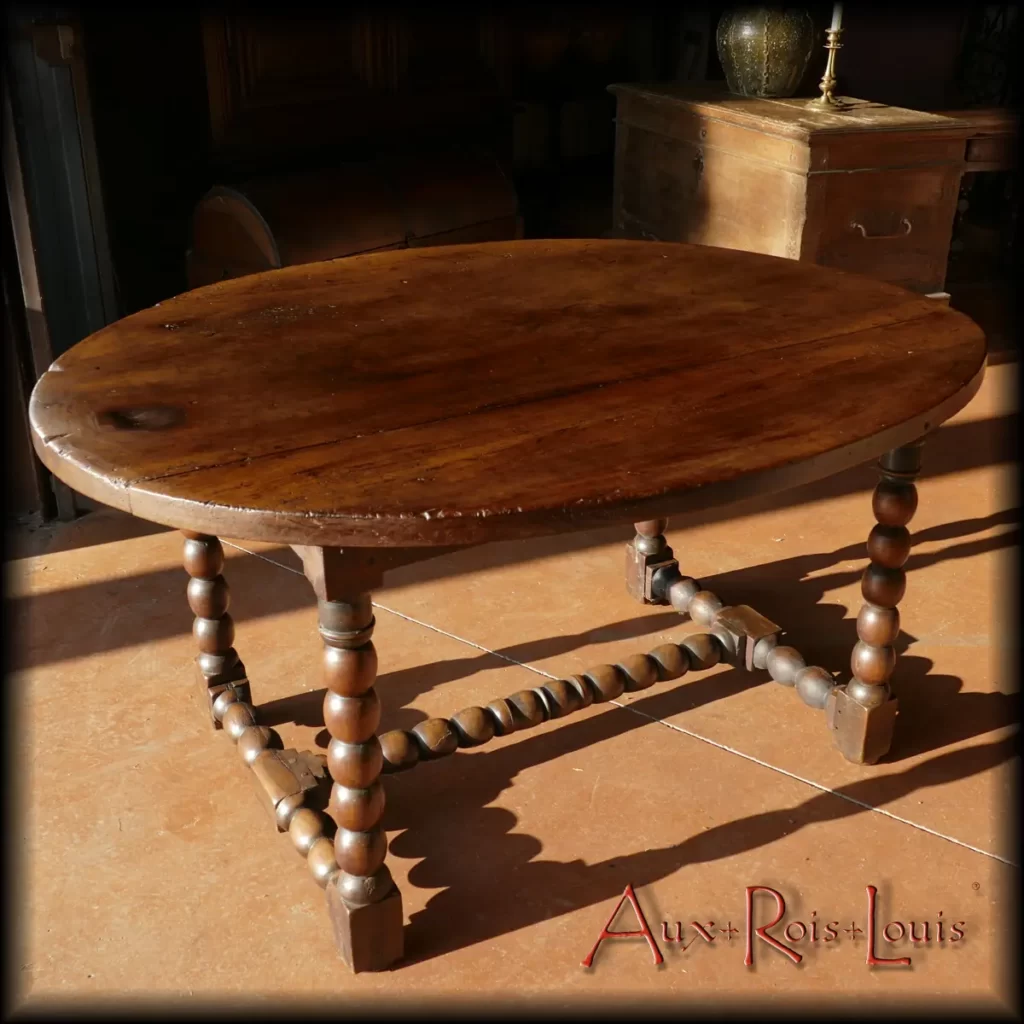
![Two oil jugs - 19ᵗʰ century - Périgord - [PA053] [PA054]](https://www.aux-rois-louis.com/wp-content/uploads/2021/10/PA053-54_P1600961.jpg)
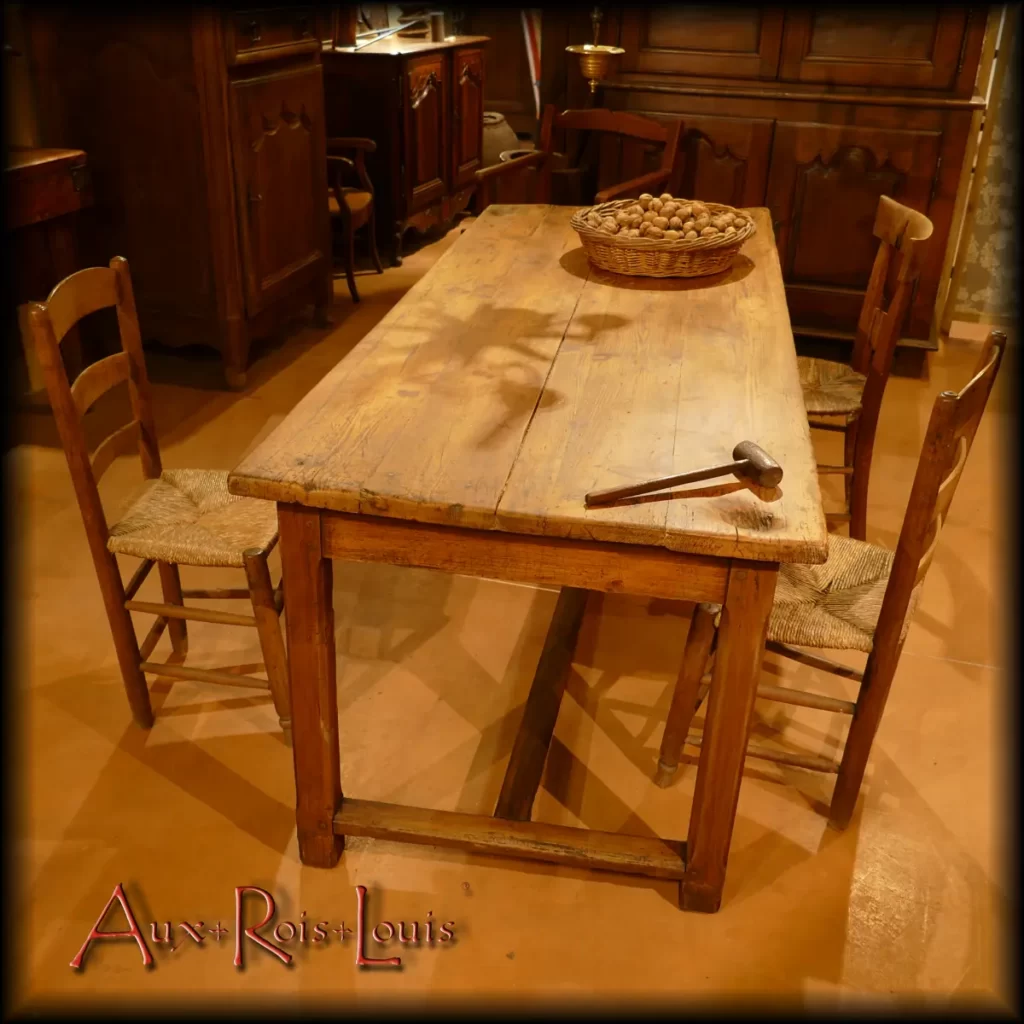
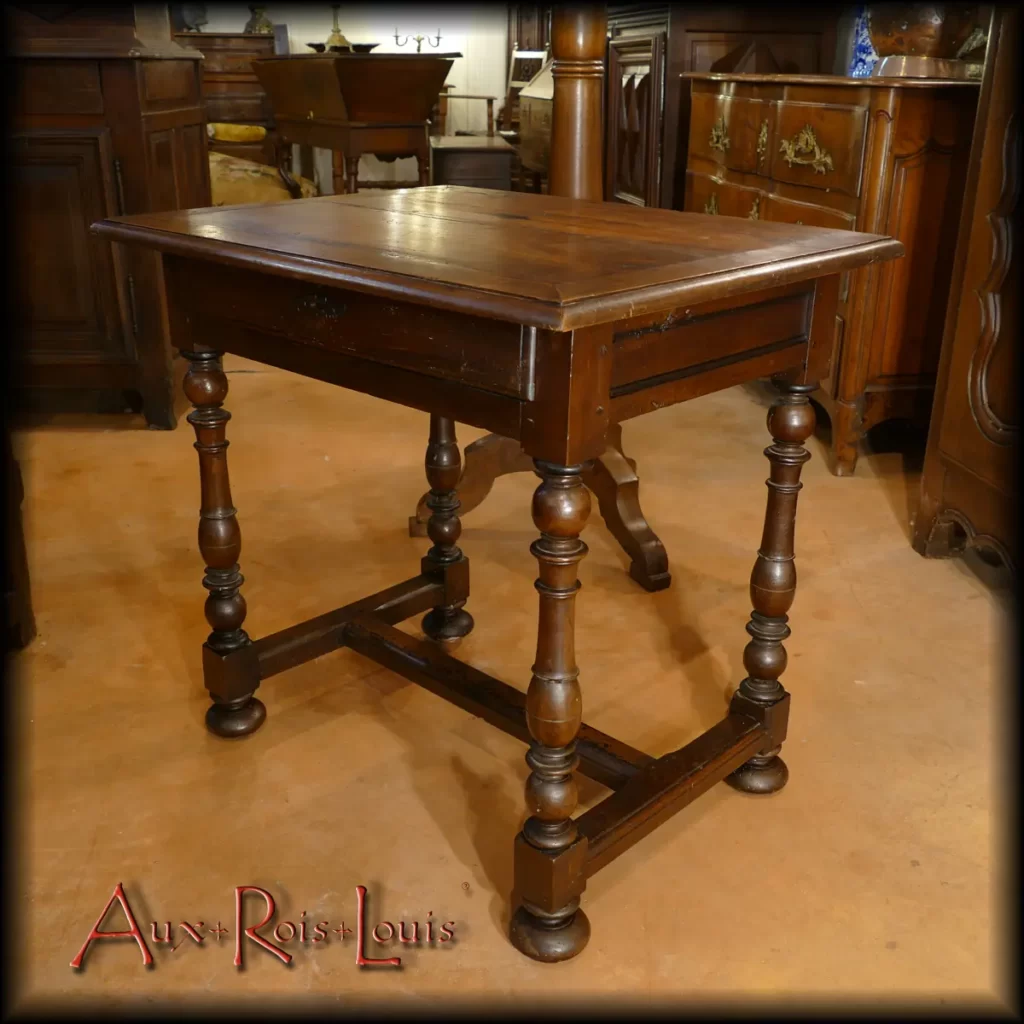
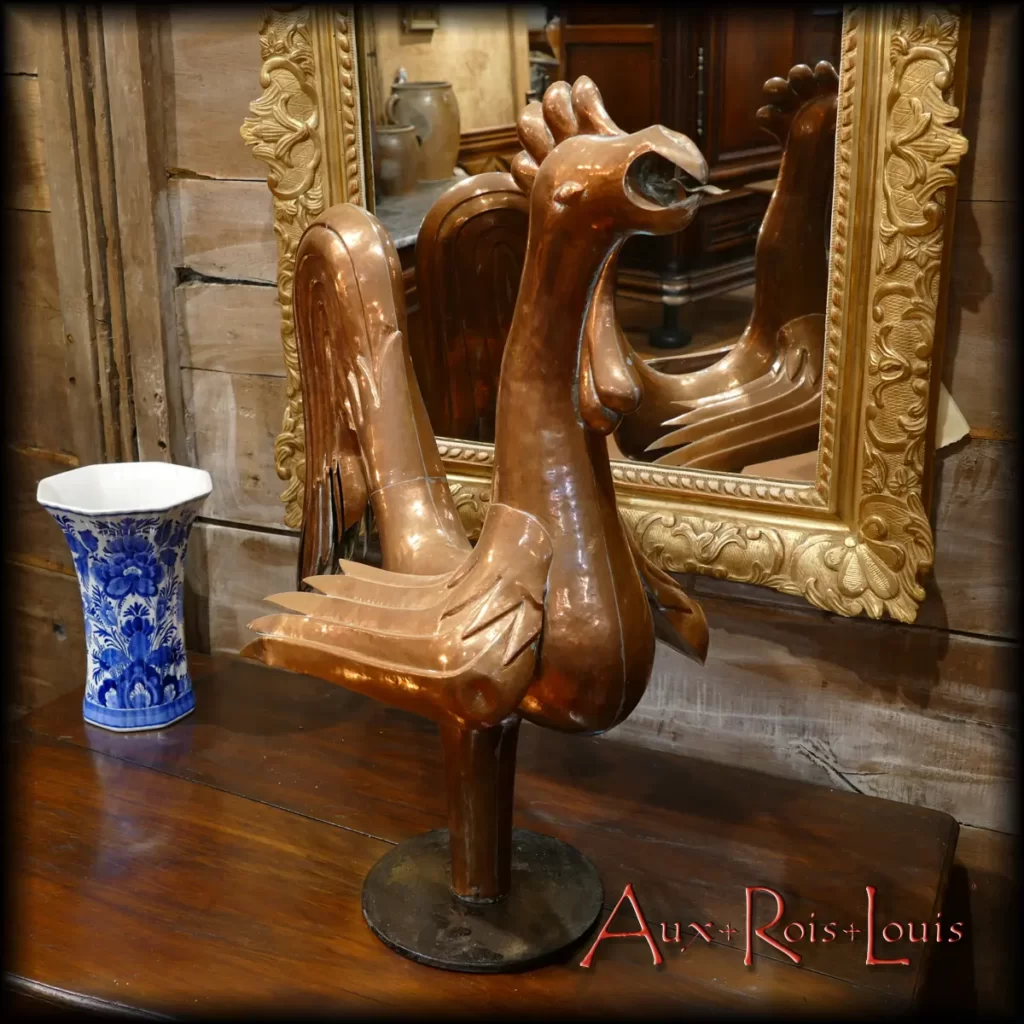
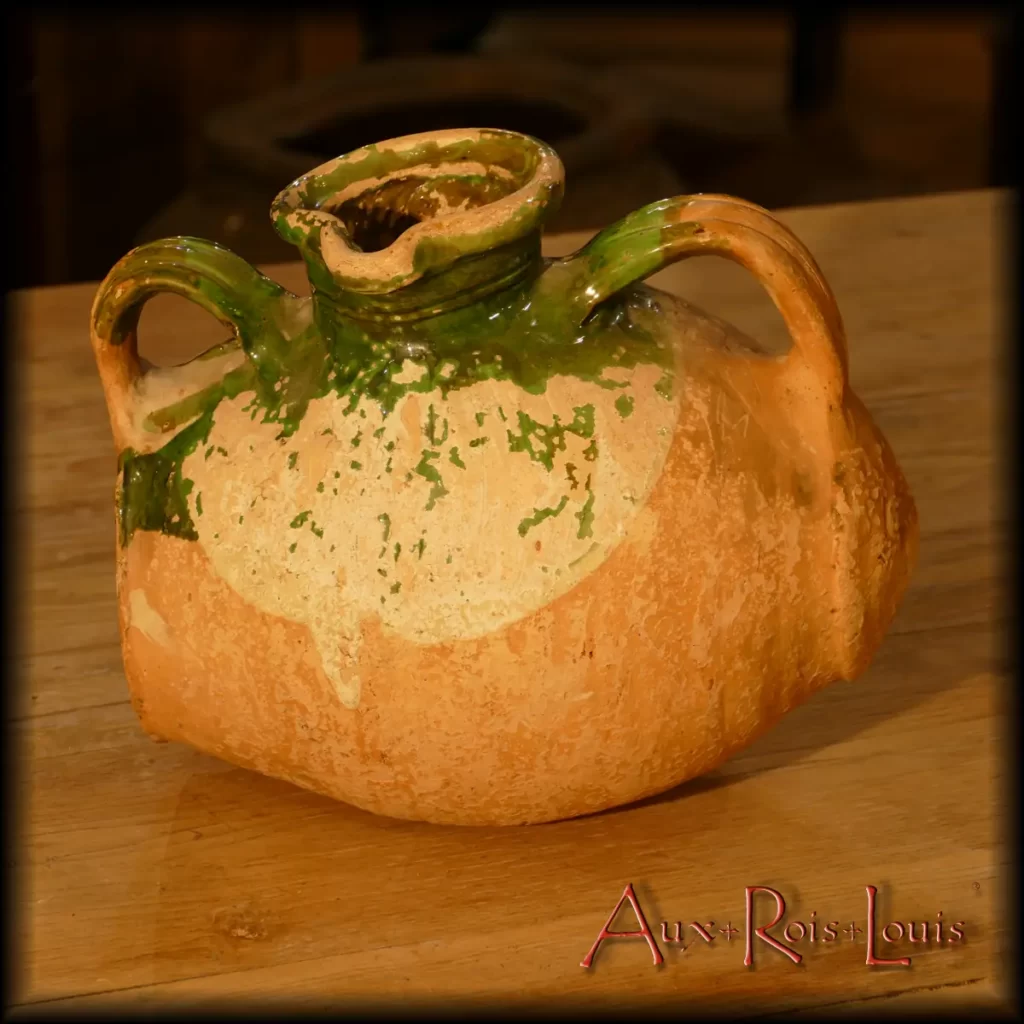
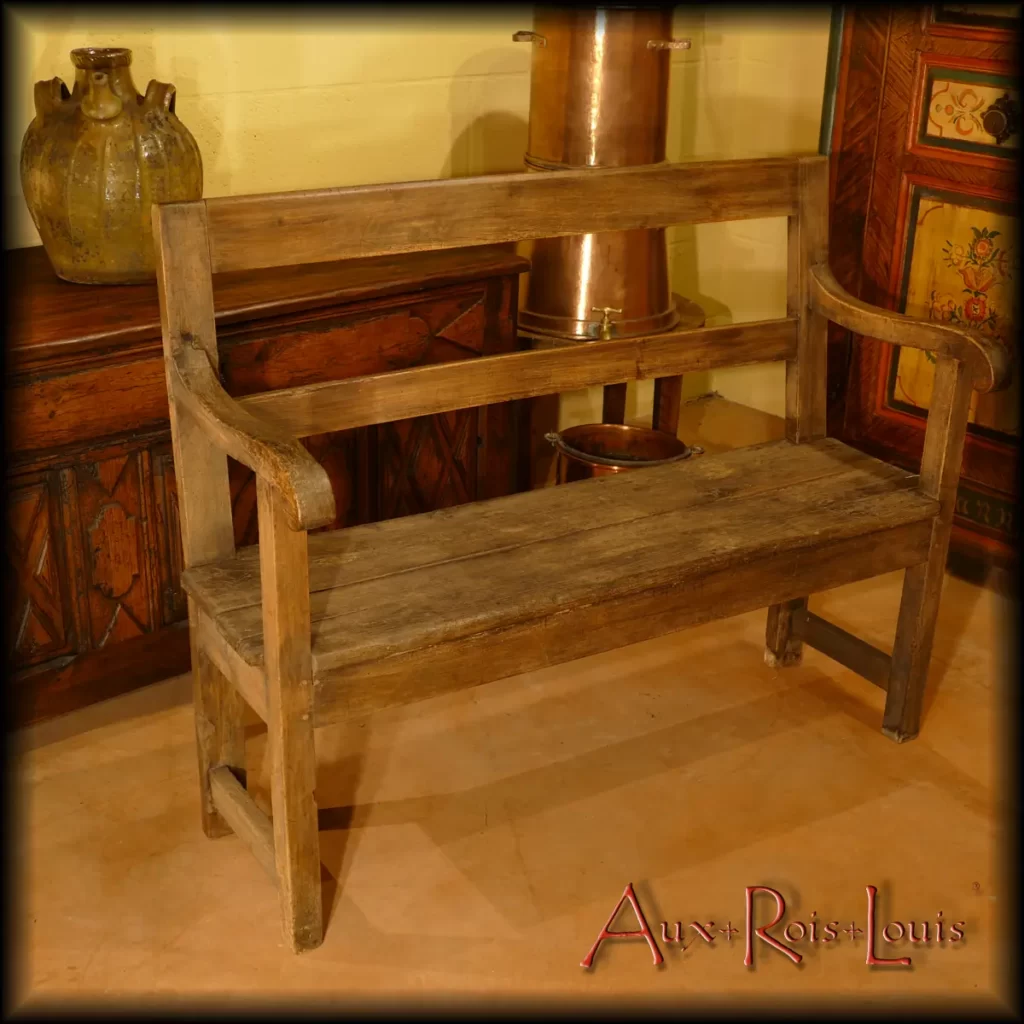
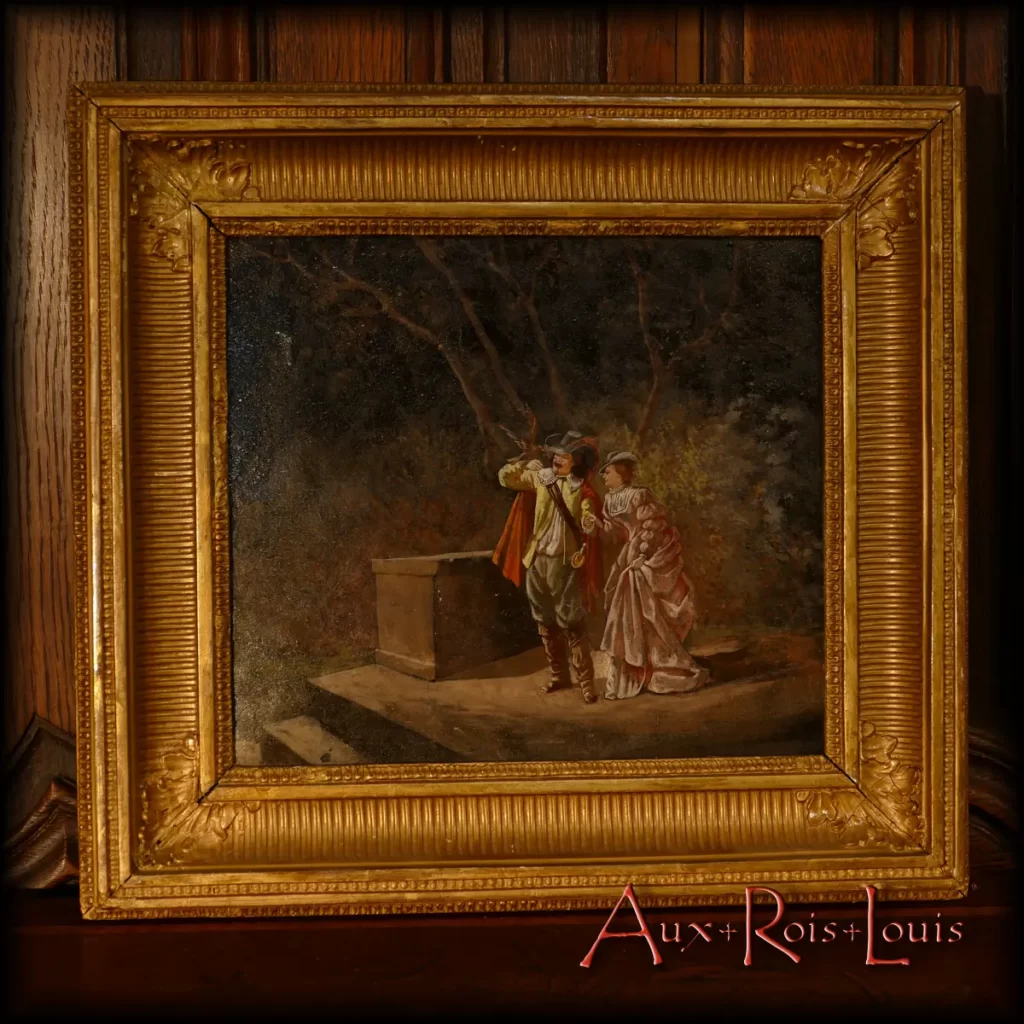
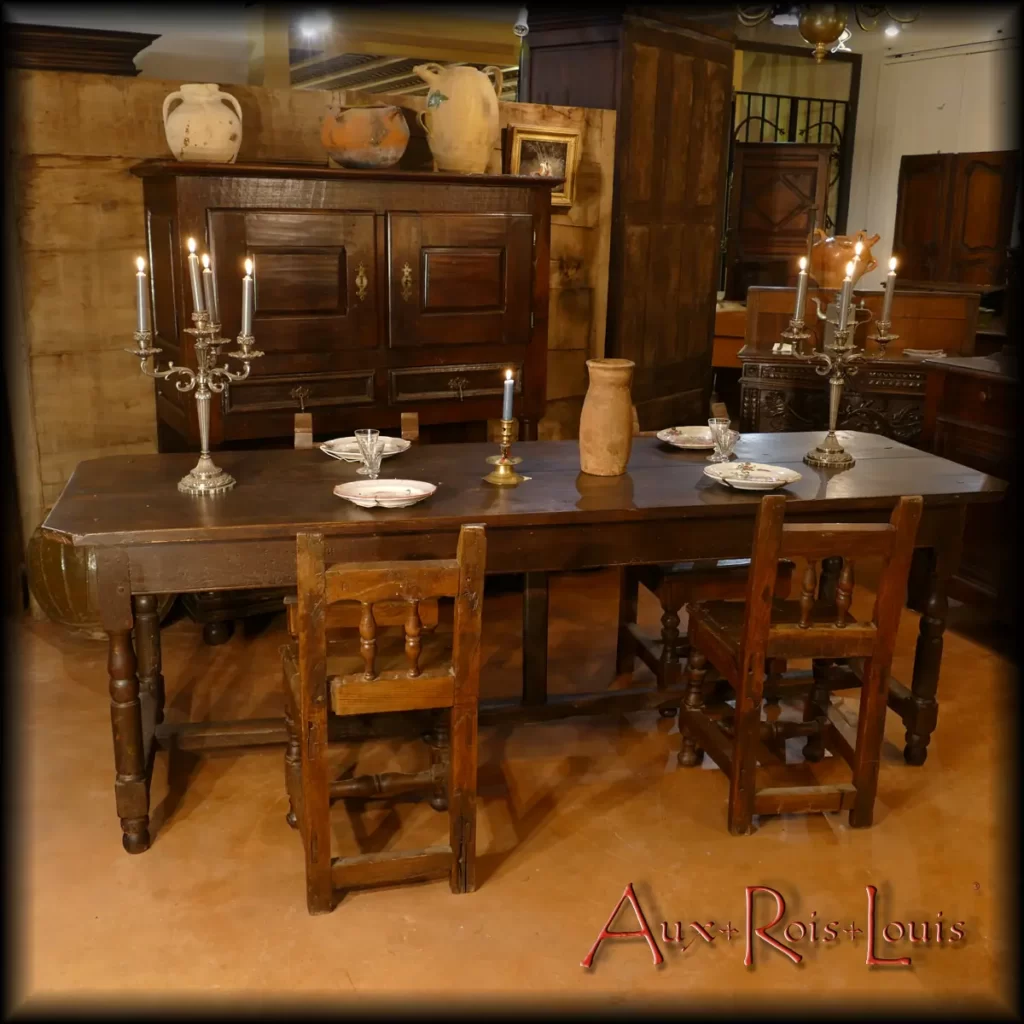
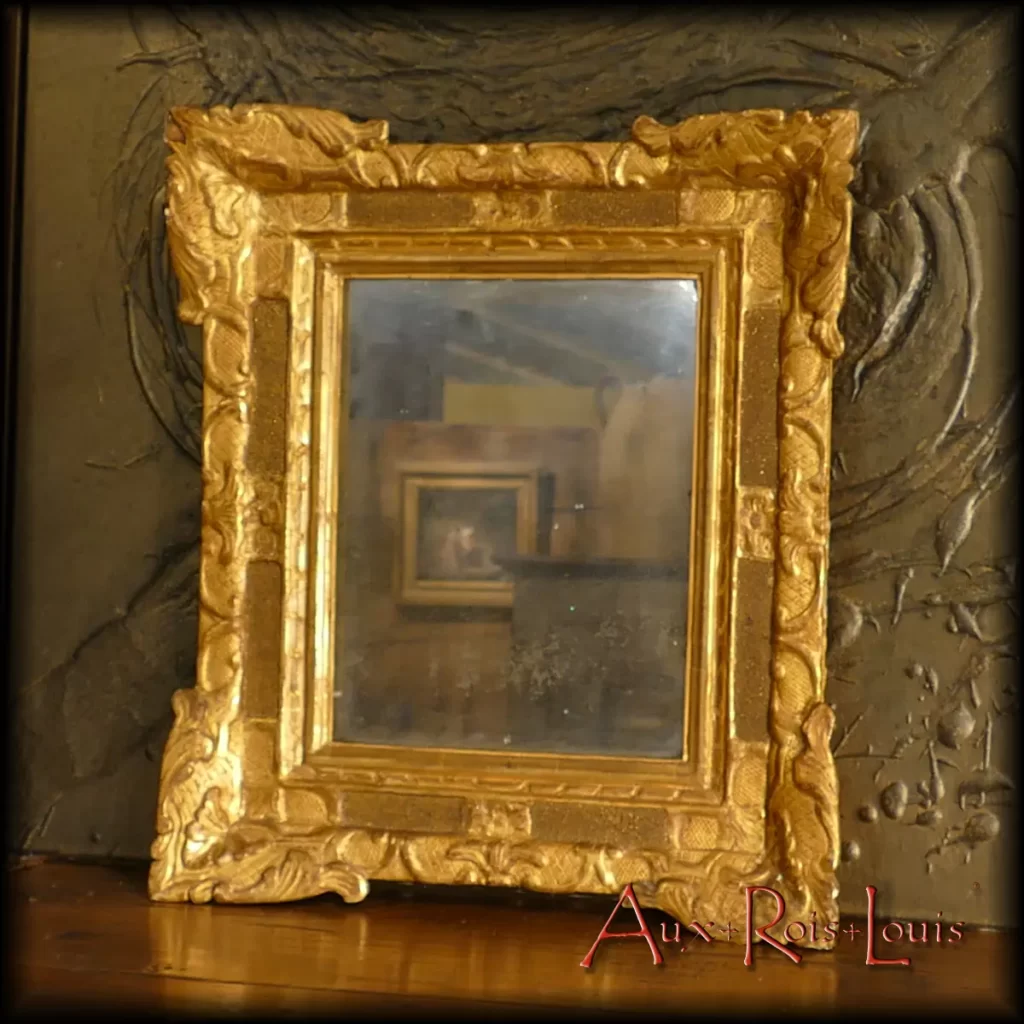
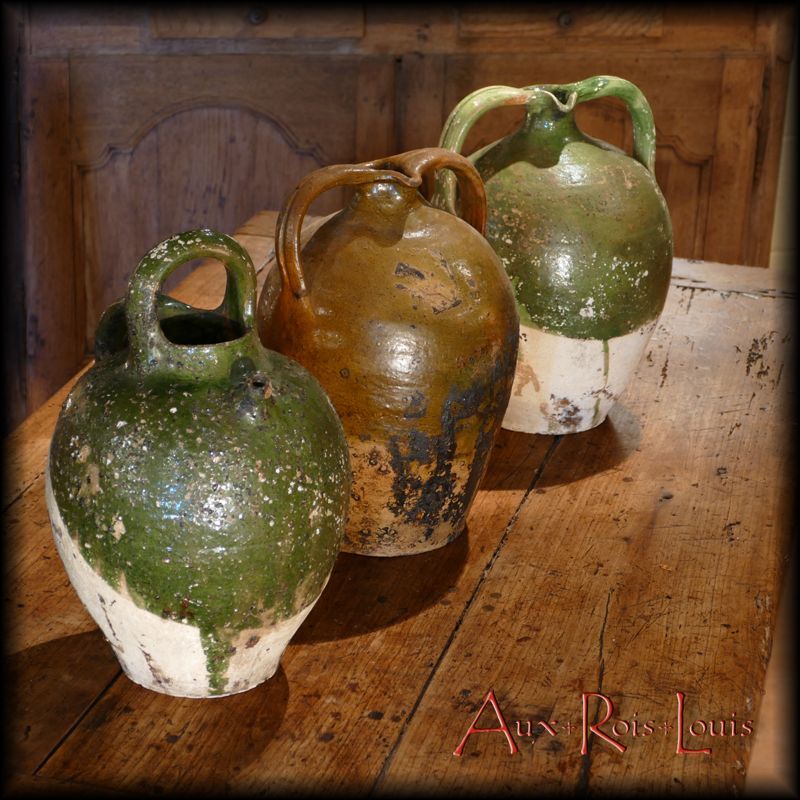
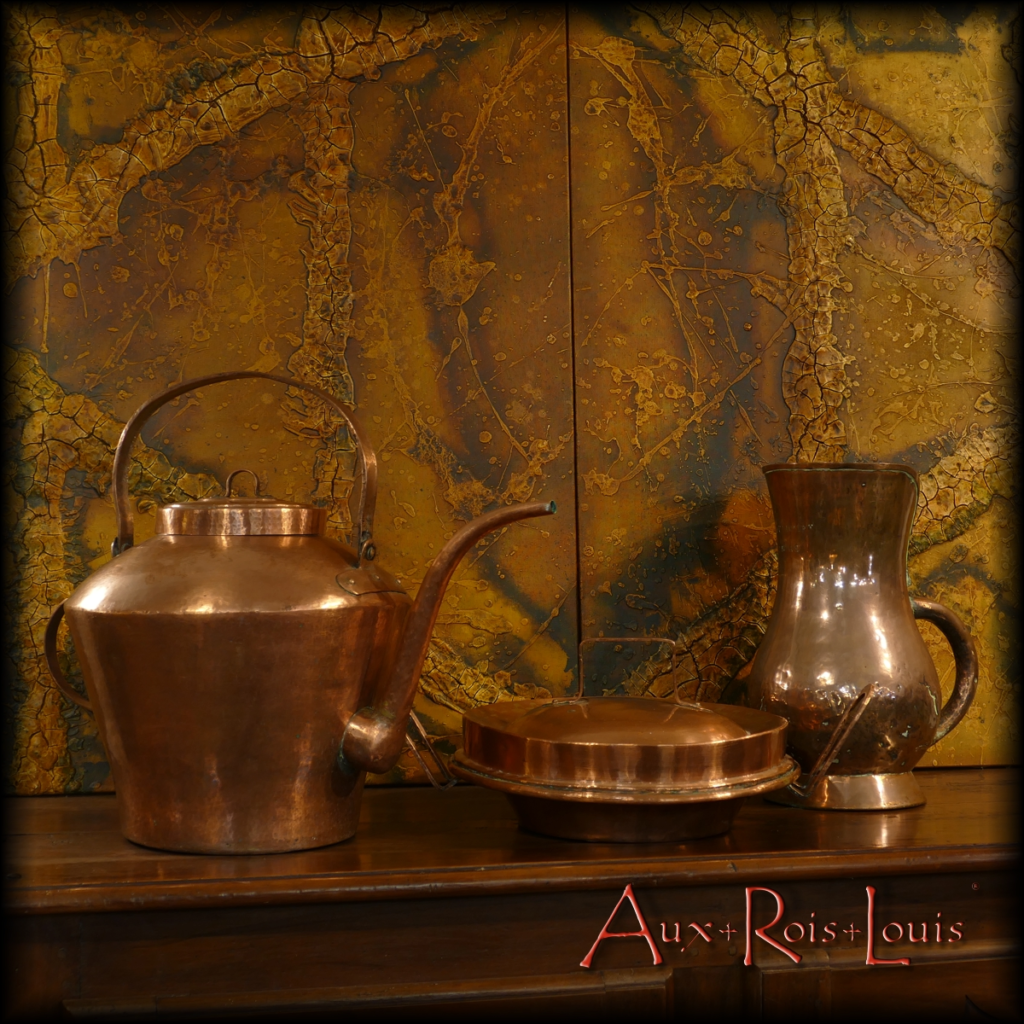
![Louis XIII kitchen cupboard 17ᵗʰ century – Haute‑Loire – [MP002]](https://www.aux-rois-louis.com/wp-content/uploads/2022/07/N17_P1470819.webp)
![Louis XIII style walnut reception table – 19th century – Périgord – [ME092]](https://www.aux-rois-louis.com/wp-content/uploads/2022/12/ME092_491-1024x1024.webp)
![Louis XIII Manor Table in Oak – 17th century – Corrèze – [ME091]](https://www.aux-rois-louis.com/wp-content/uploads/2022/12/ME091_485-1024x1024.webp)
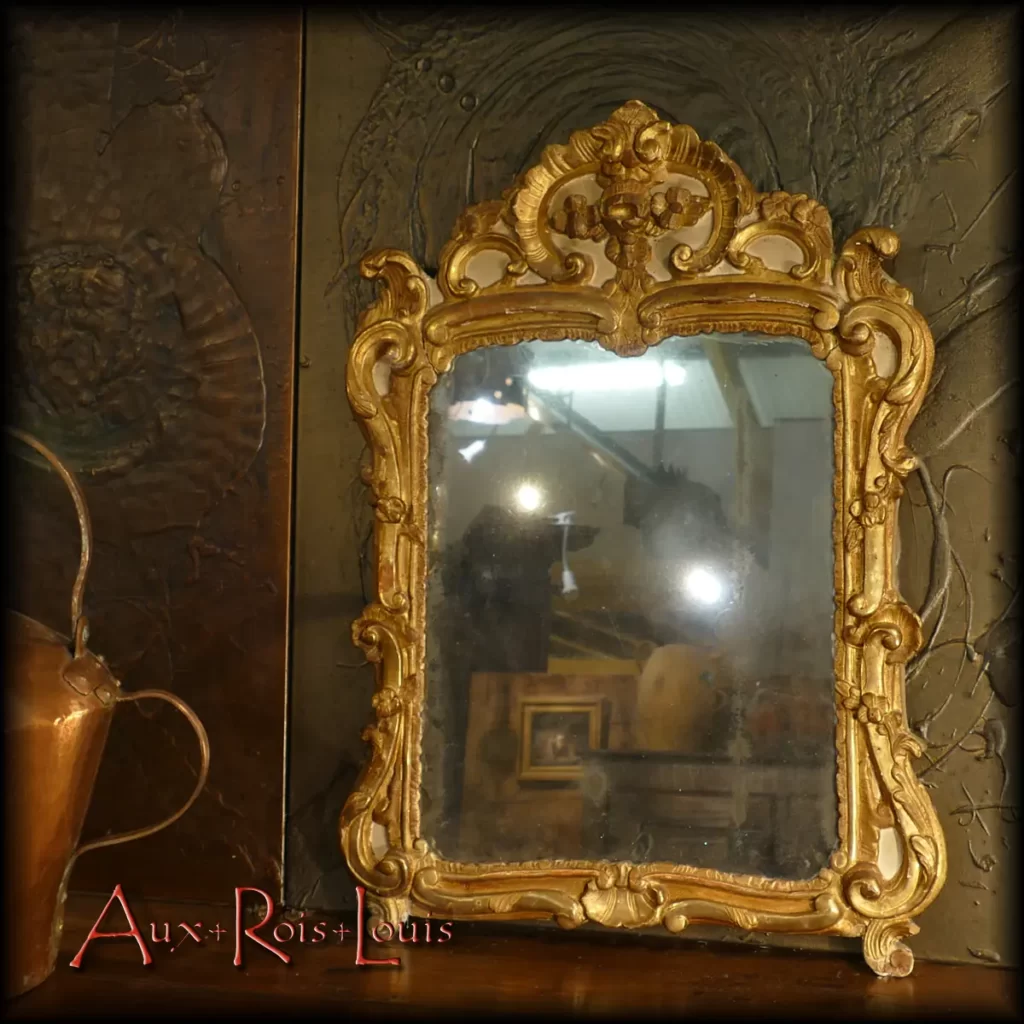
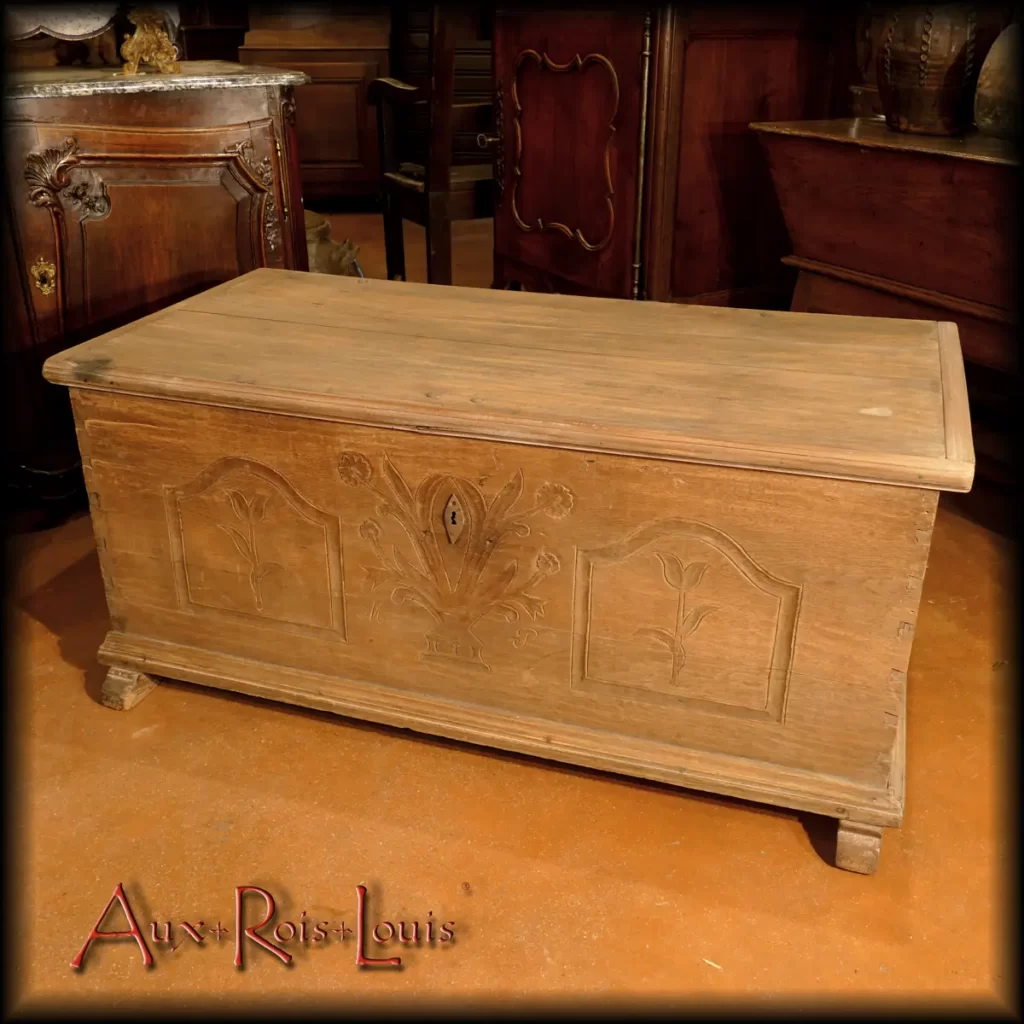
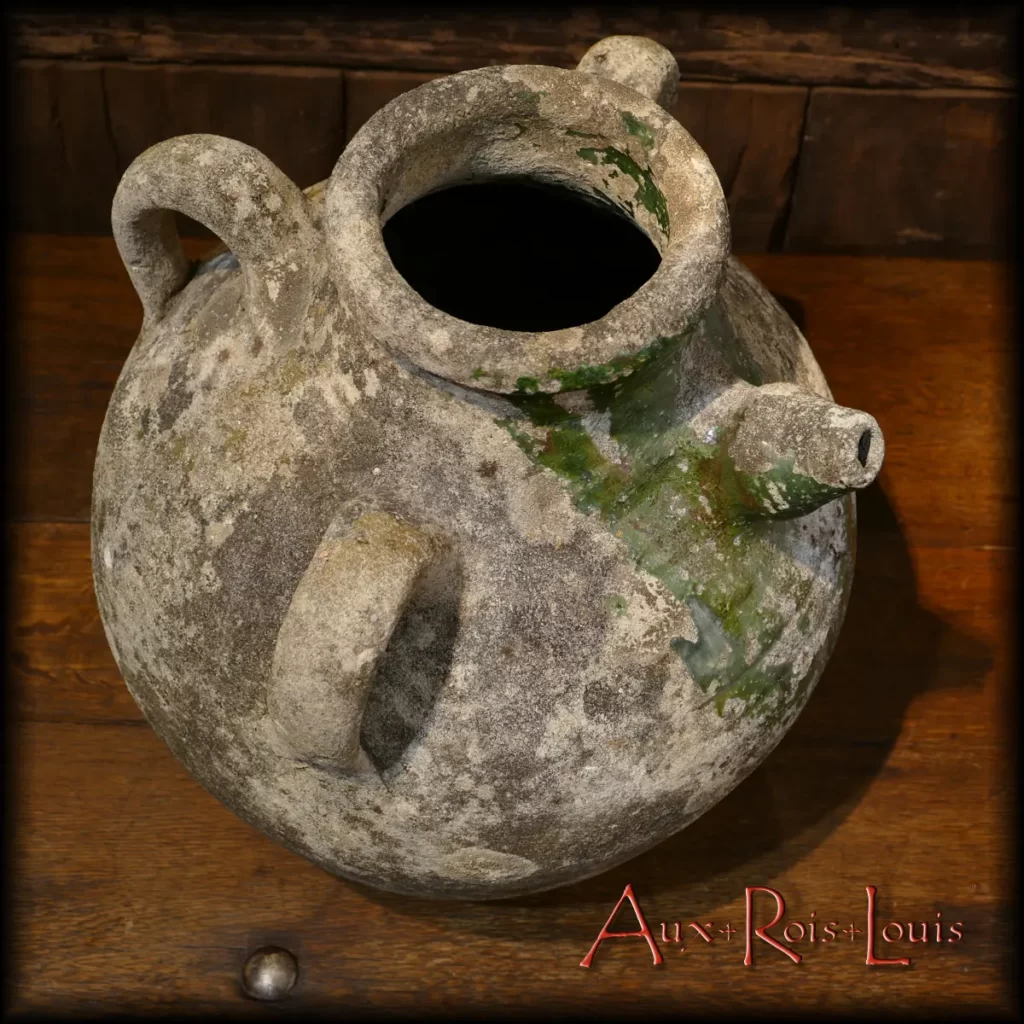
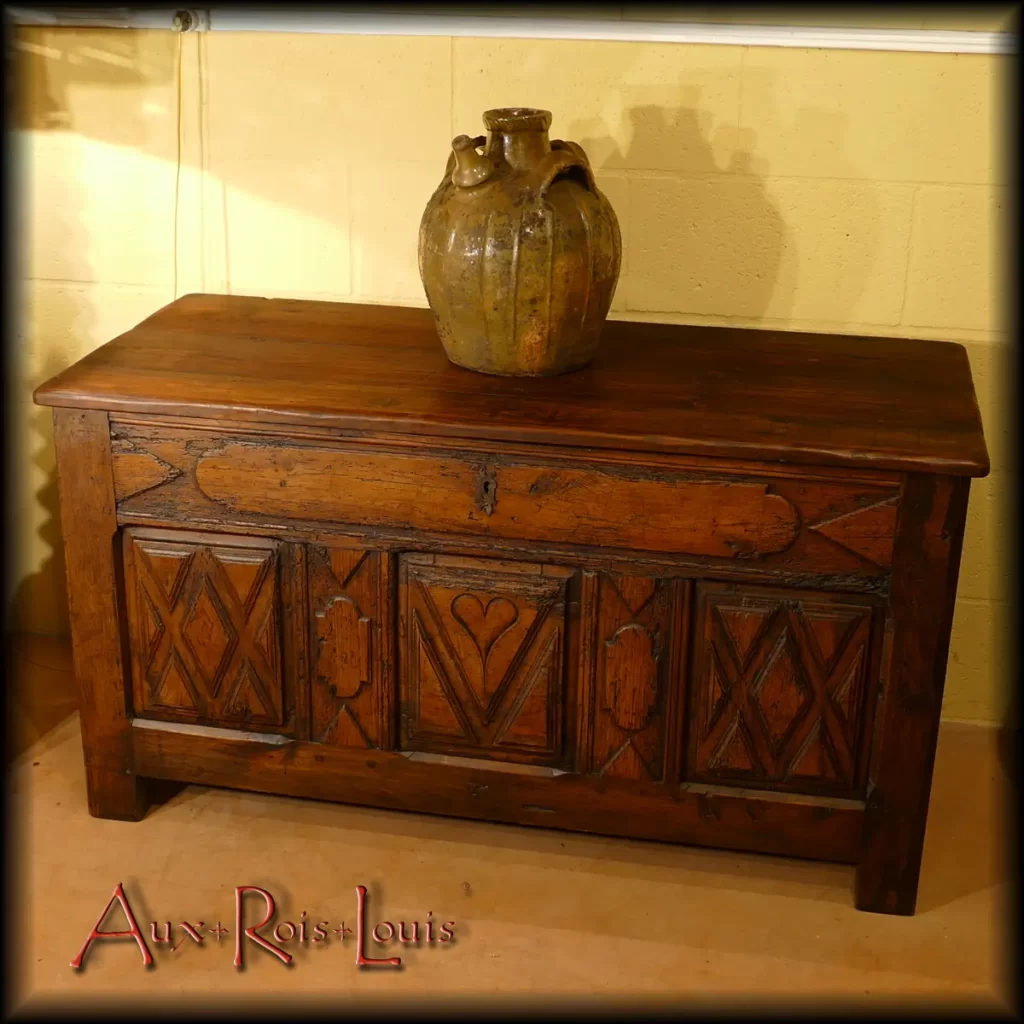
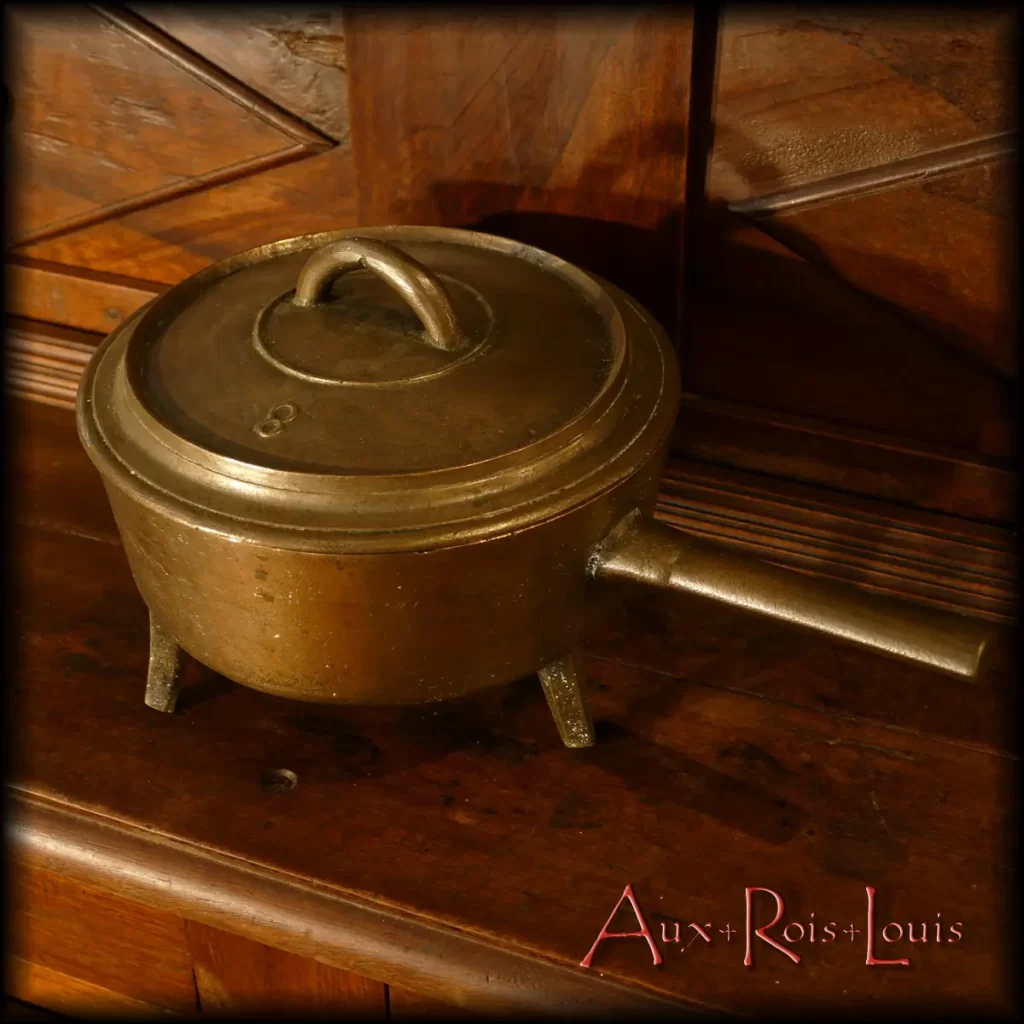
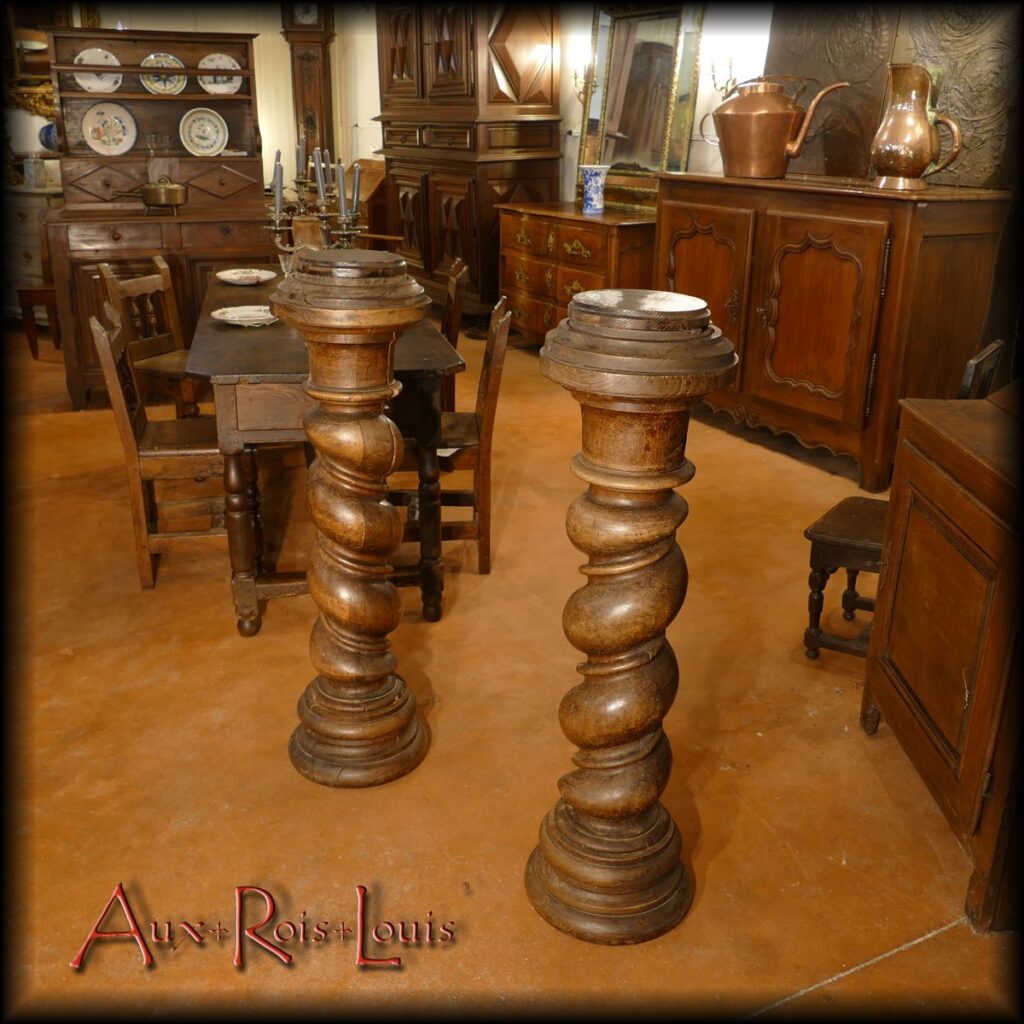
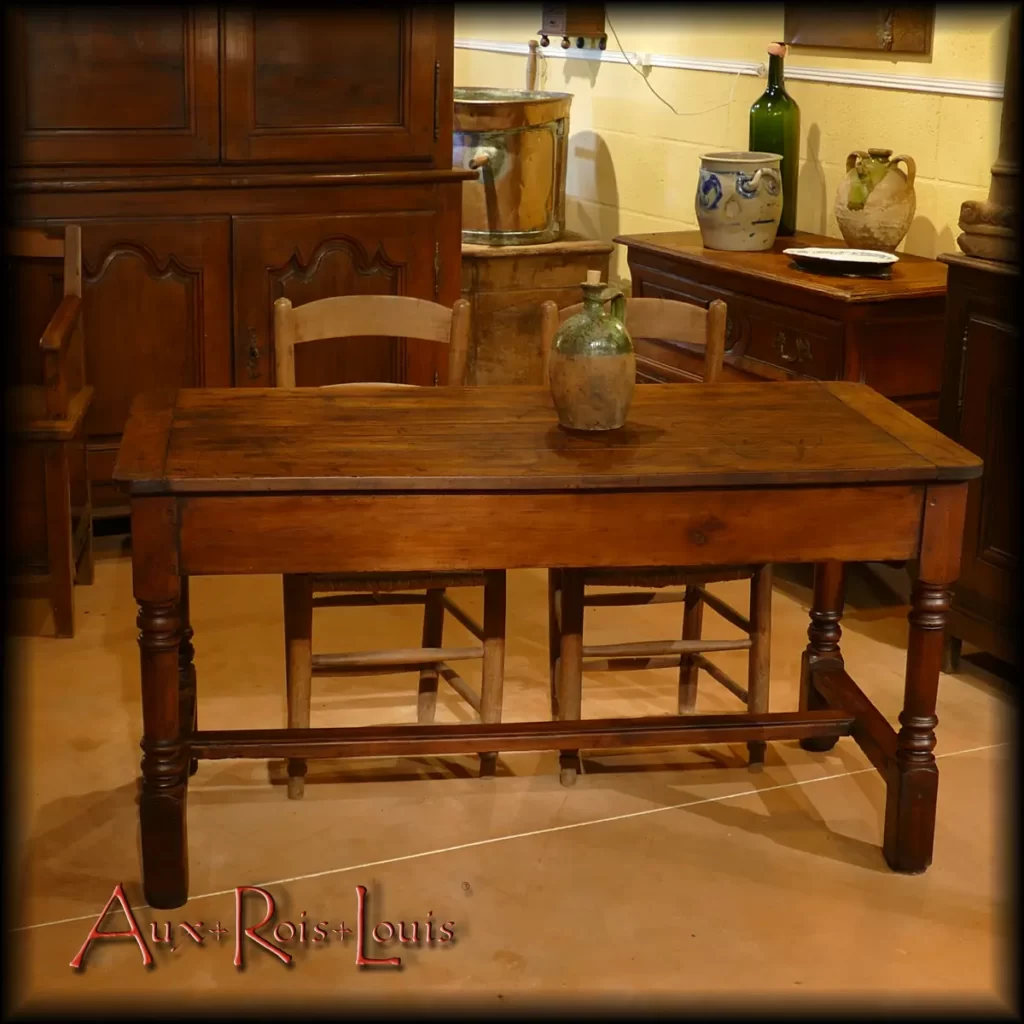
![‘Le saut de l’Ange’ – Oil on canvas – 18th century – Italy – [ME102] – This oil on canvas painting from 18th century Italy, titled](https://www.aux-rois-louis.com/wp-content/uploads/2023/02/ME102_P1660563-1024x1024.webp)
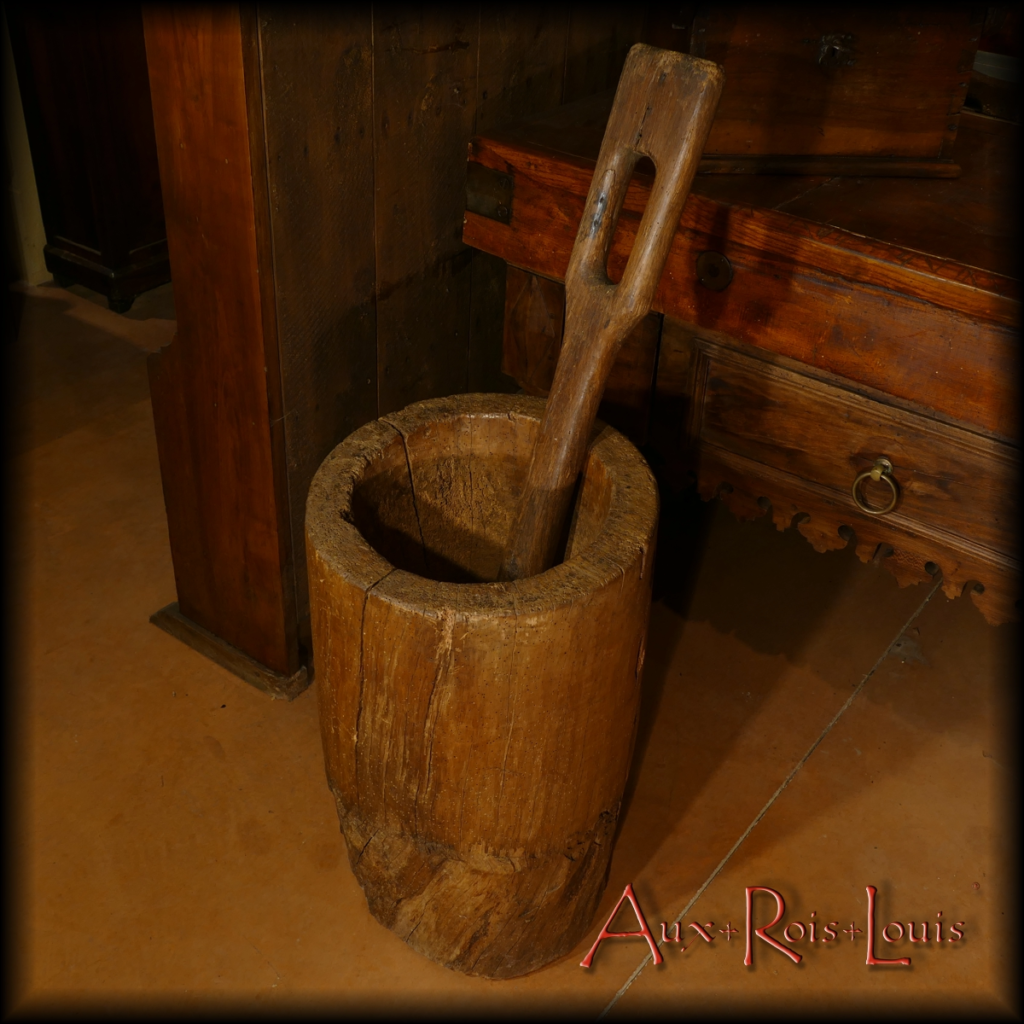
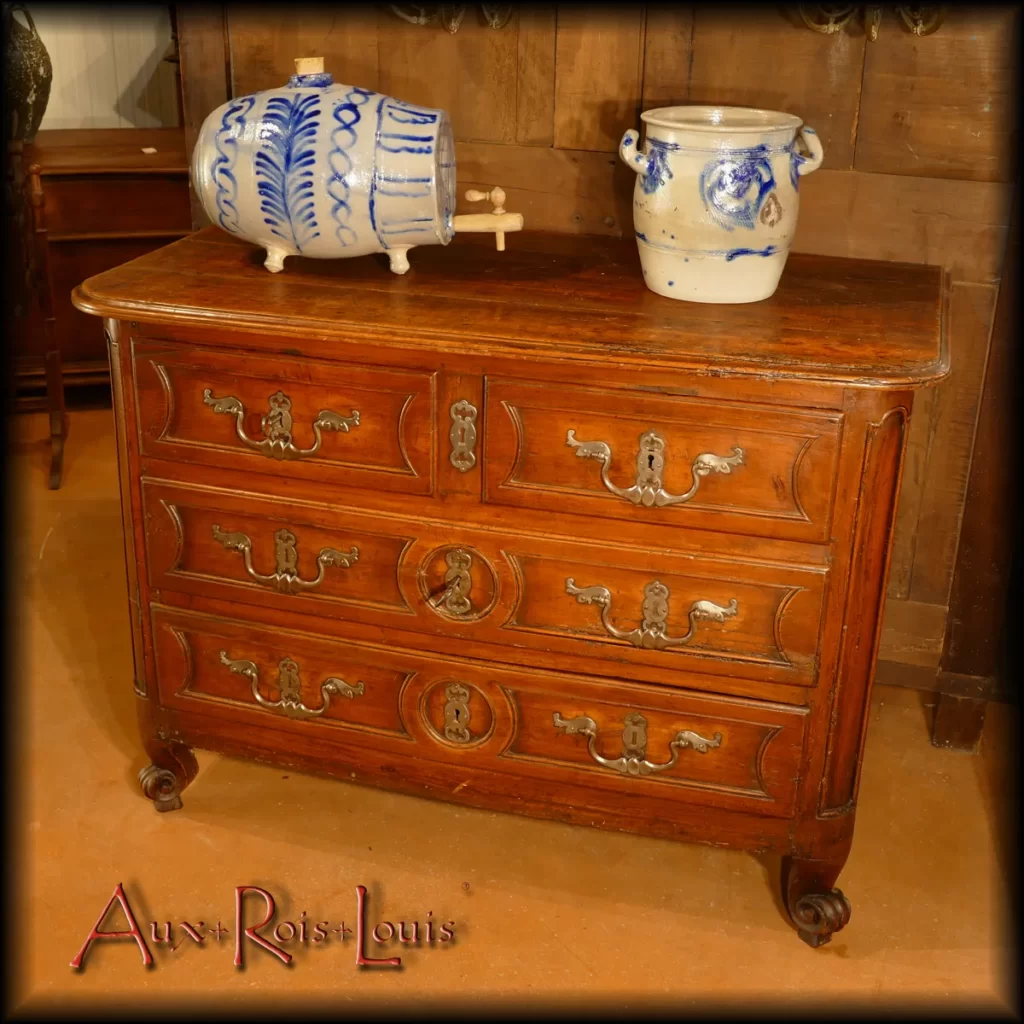
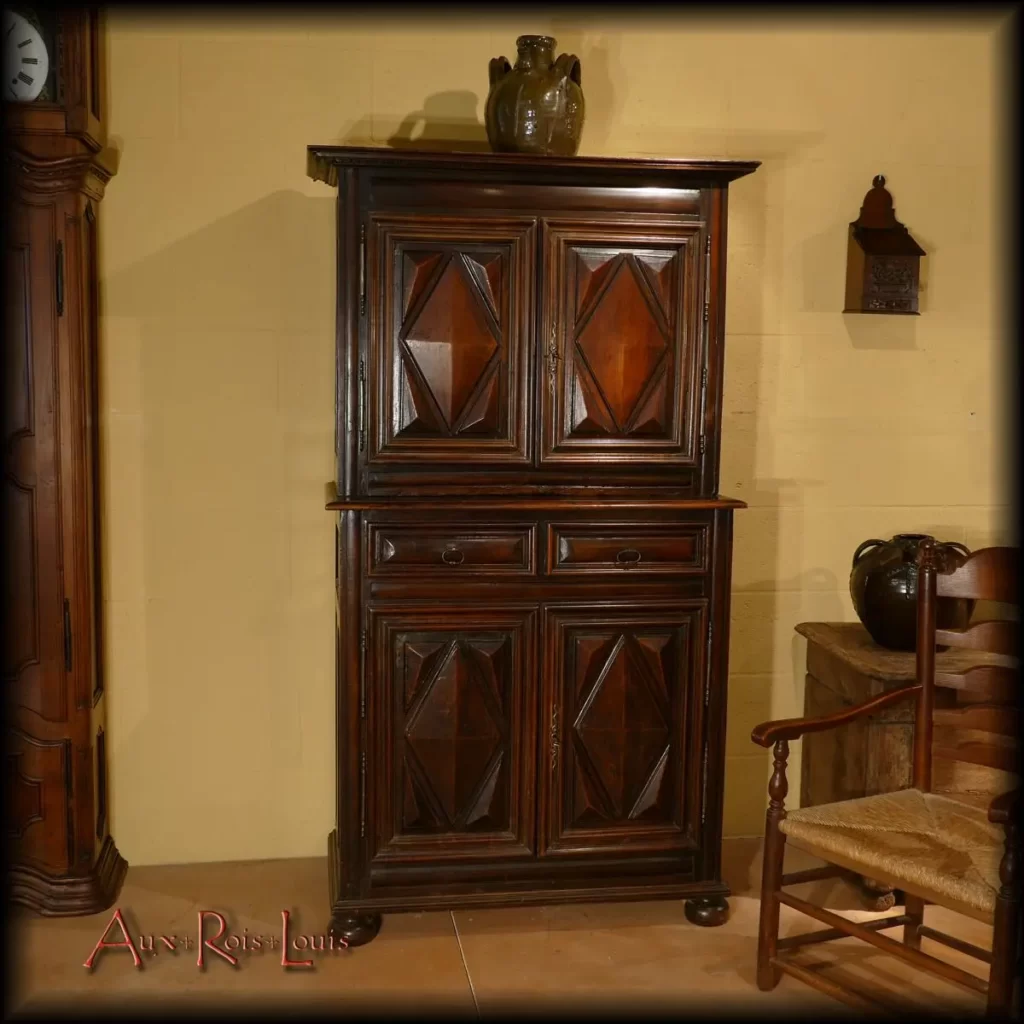
![Walnut bonnetière – Louis XIV – 17ᵗʰ century – Périgord – [ME082]](https://www.aux-rois-louis.com/wp-content/uploads/2022/08/ME082_P1660256-1024x1024.webp)
![Oak farm table – 18ᵗʰ century – Cantal – [MP031]](https://www.aux-rois-louis.com/wp-content/uploads/2022/08/MP031_093-1024x1024.webp)
![Pitcher – 19ᵗʰ century – Auvergne – [PA009]](https://www.aux-rois-louis.com/wp-content/uploads/2022/07/PA009_N009_P1340559c1200-1-1024x1024.webp)
![Oil jar – 18ᵗʰ century – Auvergne – [PA008]](https://www.aux-rois-louis.com/wp-content/uploads/2022/07/PA008_N008_P1340558c1200-1024x1024.webp)
![Large Louis XV mirror – gilded wood – late 18ᵗʰ century – Midi-Pyrénées – [ME084]](https://www.aux-rois-louis.com/wp-content/uploads/2022/06/ME084_P1660282-1024x1024.webp)
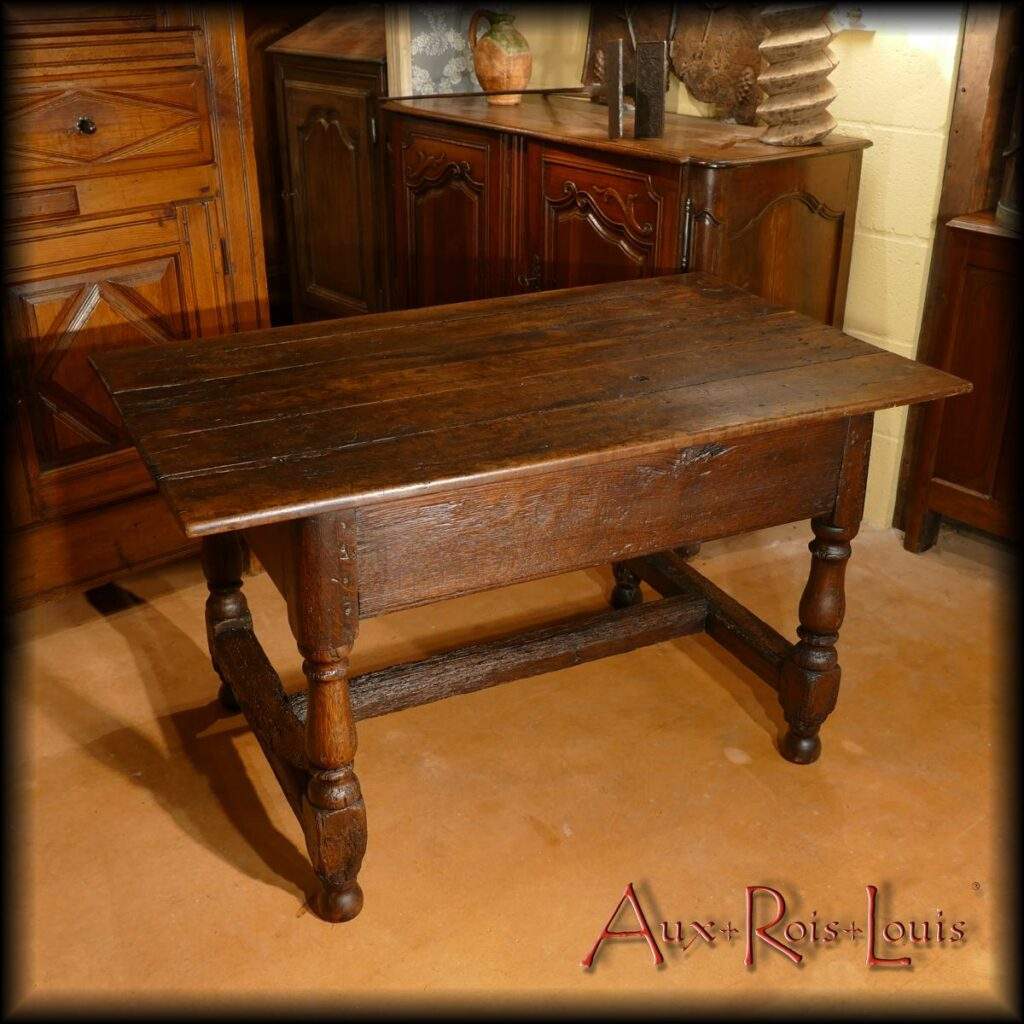
![Louis XV mirror – giltwood frame – late 18ᵗʰ century – South of France – [ME083]](https://www.aux-rois-louis.com/wp-content/uploads/2022/06/ME083_P1660268-1024x1024.webp)
![Louis XV mirror – gilded wood – 18ᵗʰ century – South West – [ME085]](https://www.aux-rois-louis.com/wp-content/uploads/2022/06/ME085_P1660289-1024x1024.webp)
![Pantalonnière cupboard in cherry wood – Louis XIV – 18ᵗʰ century – Gironde – [ME044]](https://www.aux-rois-louis.com/wp-content/uploads/2020/11/ME044_184.jpg)
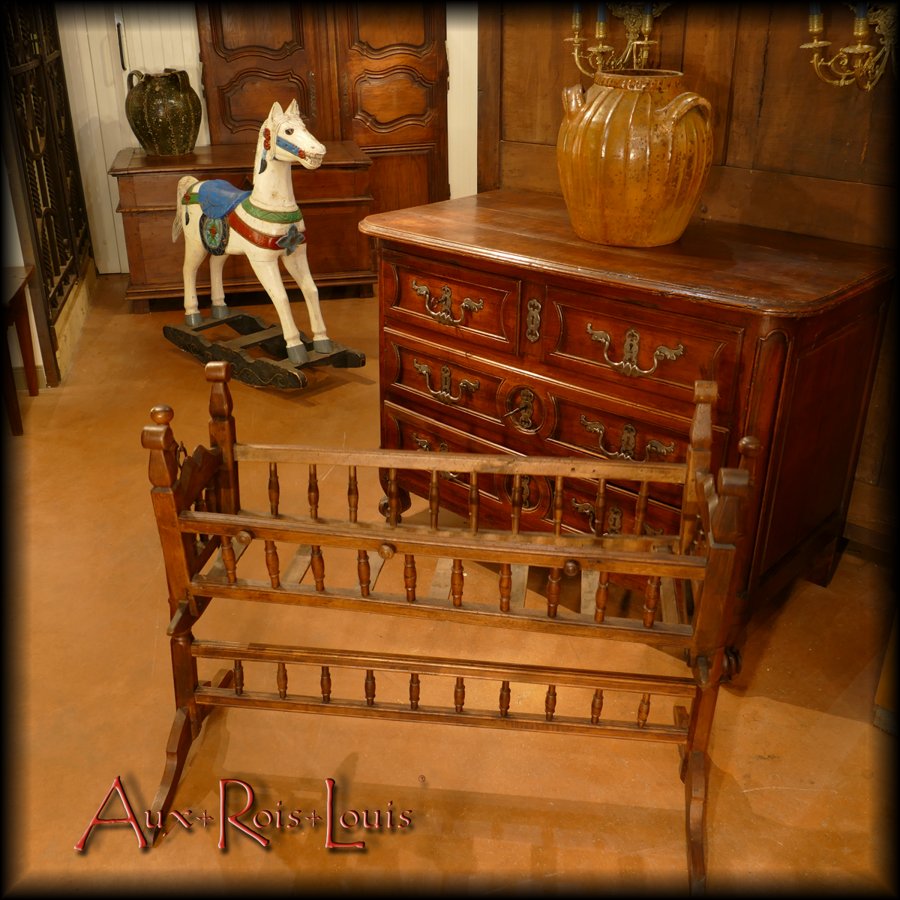
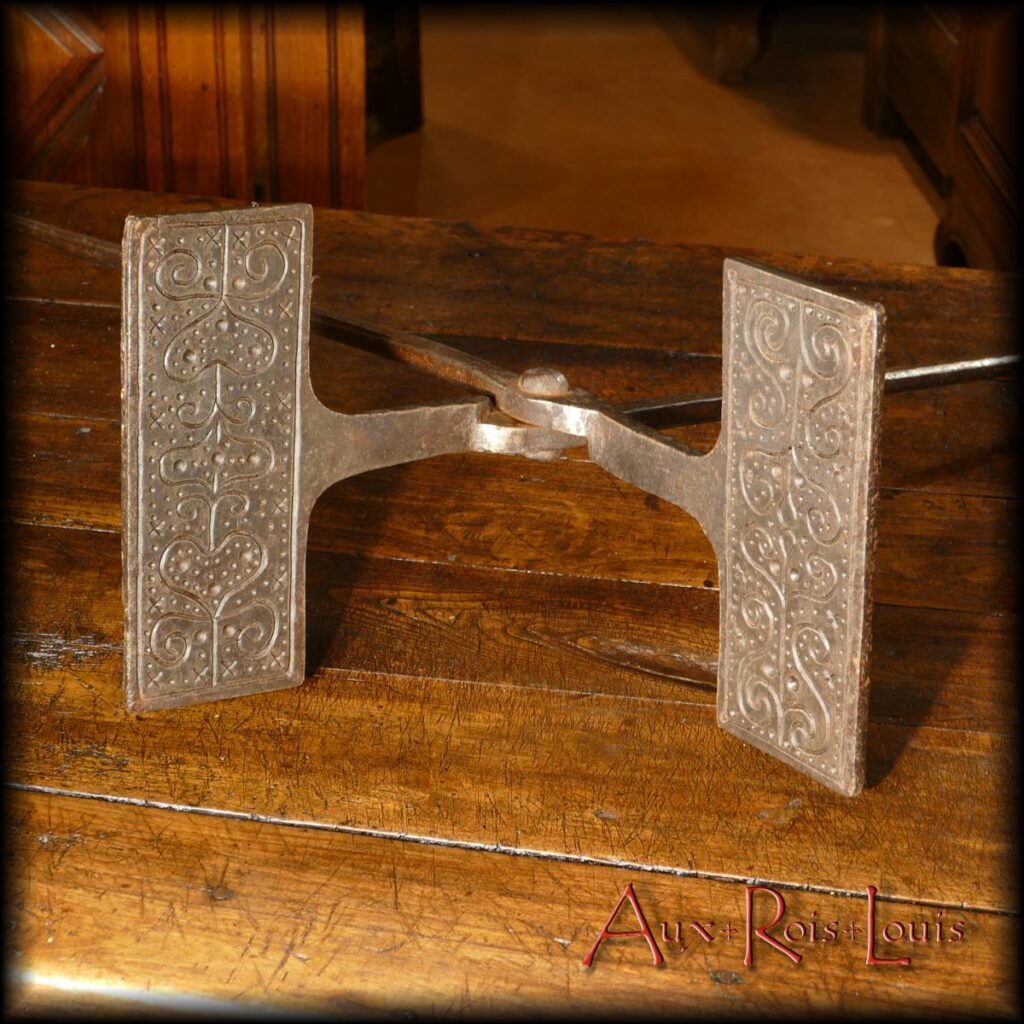
![Small vat for the soup in cast iron – 17ᵗʰ century – Fonderies du Périgord – [ME077]](https://www.aux-rois-louis.com/wp-content/uploads/2022/05/ME077_P1660136-1024x1024.jpg)
![Cast iron fireback – Louis XV – 18ᵗʰ century – South-West – [ME079]](https://www.aux-rois-louis.com/wp-content/uploads/2022/04/ME079_P1660184det-1024x1024.jpg)
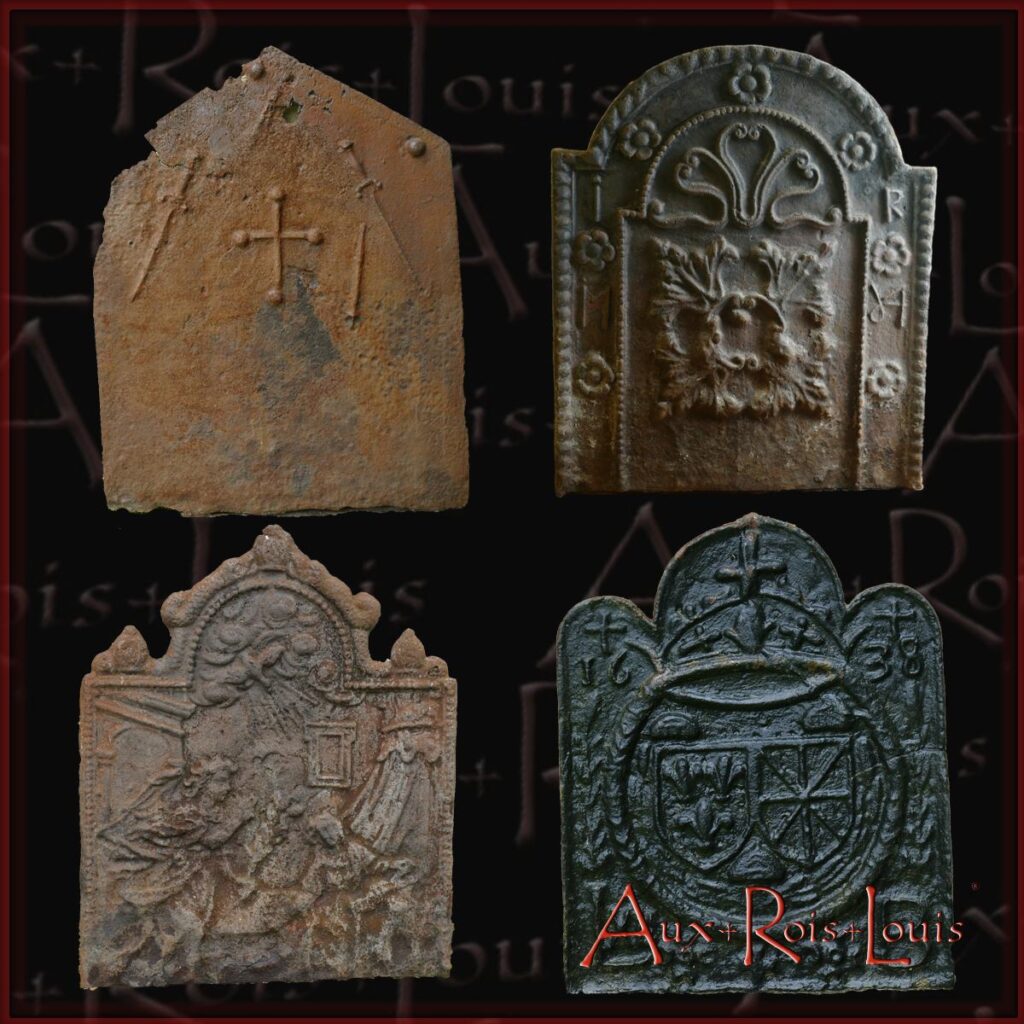
![Cast iron andirons - 18th century - Périgord - [ME062]](https://www.aux-rois-louis.com/wp-content/uploads/2021/09/ME062_013.jpg)
![Walnut sideboard – 18ᵗʰ century – South-West – [MP030]](https://www.aux-rois-louis.com/wp-content/uploads/2022/04/MP030_740-1024x1024.jpg)
![Louis XIII credenza in walnut – 17ᵗʰ century – South-West – [ME071]](https://www.aux-rois-louis.com/wp-content/uploads/2022/03/ME071_P1650727x900.jpg)
![Oak wedding chest – 18th century – Auvergne – [MP028]](https://www.aux-rois-louis.com/wp-content/uploads/2022/03/MP028_705x900.jpg)
![Walnut pantry cabinet - 19th century - Provence - [MP026]](https://www.aux-rois-louis.com/wp-content/uploads/2021/11/MP026_P1650178x900.jpg)
![Two water jugs - 19th century - Lot Valley - [PA058] [PA059]](https://www.aux-rois-louis.com/wp-content/uploads/2021/12/PA058_59_094x900.jpg)
![Two oil jugs - late 18th century early 19th century - Lot Valley, Quercy - [PA062] [PA063]](https://www.aux-rois-louis.com/wp-content/uploads/2021/12/PA062-63_P1650160.jpg)
![Walnut storage cabinet – 18ᵗʰ century – France – [ME066]](https://www.aux-rois-louis.com/wp-content/uploads/2021/11/ME066_P1650134x900.jpg)
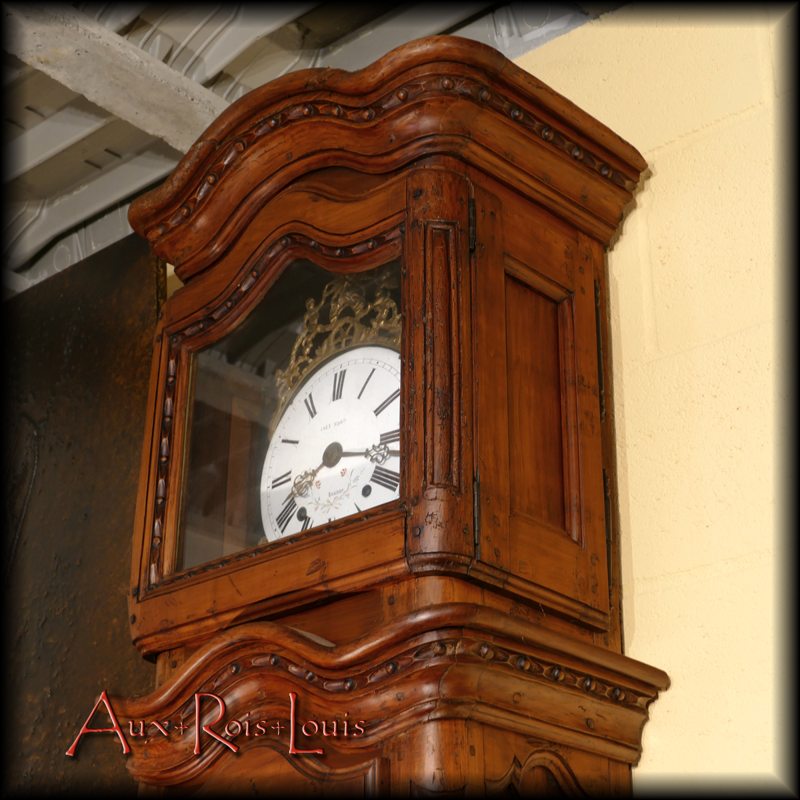
![Walnut sideboard with scallop shell – Louis XV – 18th century – Lot Valley – [ME067]](https://www.aux-rois-louis.com/wp-content/uploads/2021/11/ME067_144.jpg)
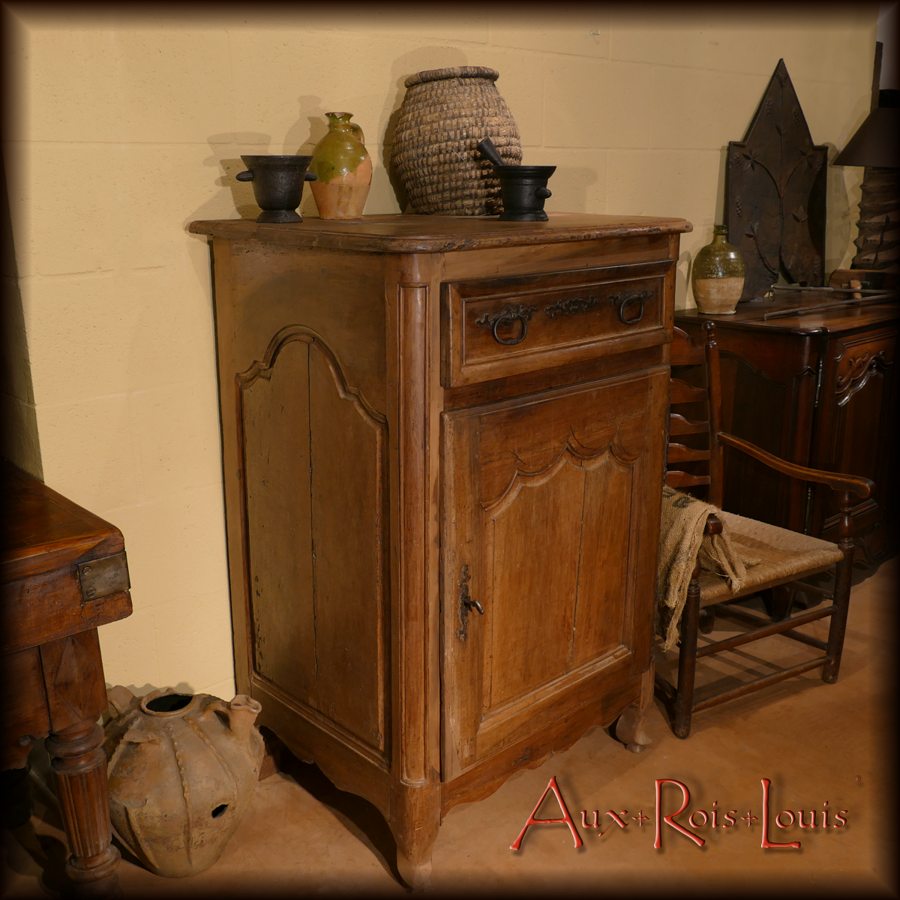
![Two water jugs – 19th century – Les Landes – [PA060] [PA061]](https://www.aux-rois-louis.com/wp-content/uploads/2021/11/PA060_61_099x900.jpg)
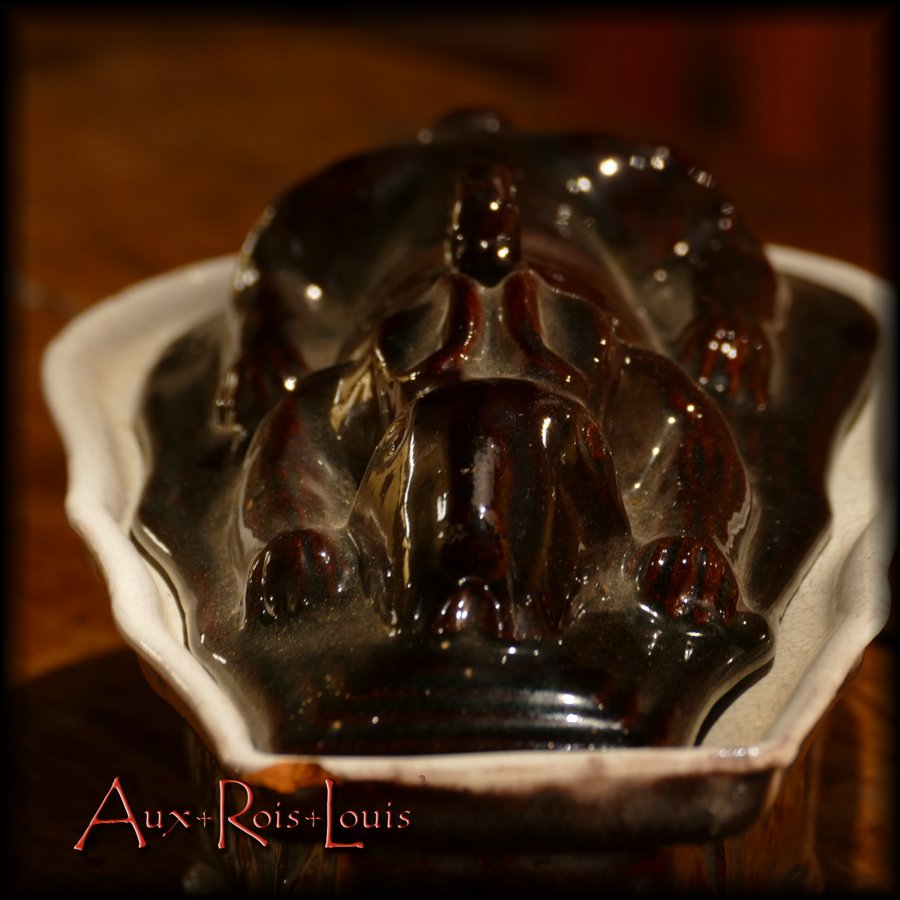
![Oil jar – 19ᵗʰ century – Quercy – [PA044]](https://www.aux-rois-louis.com/wp-content/uploads/2021/02/PA044_P1600318.jpg)
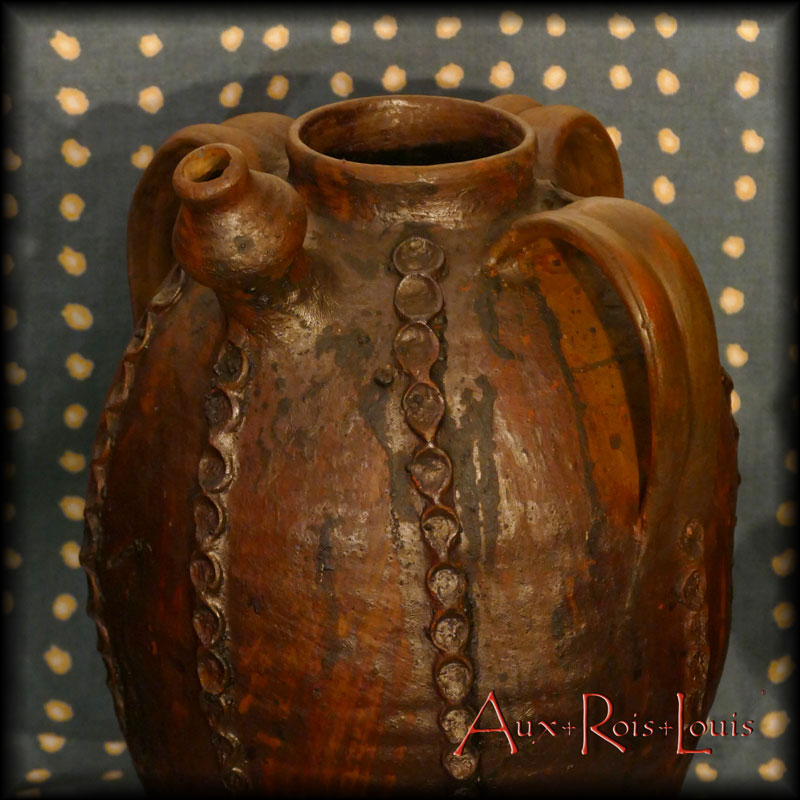
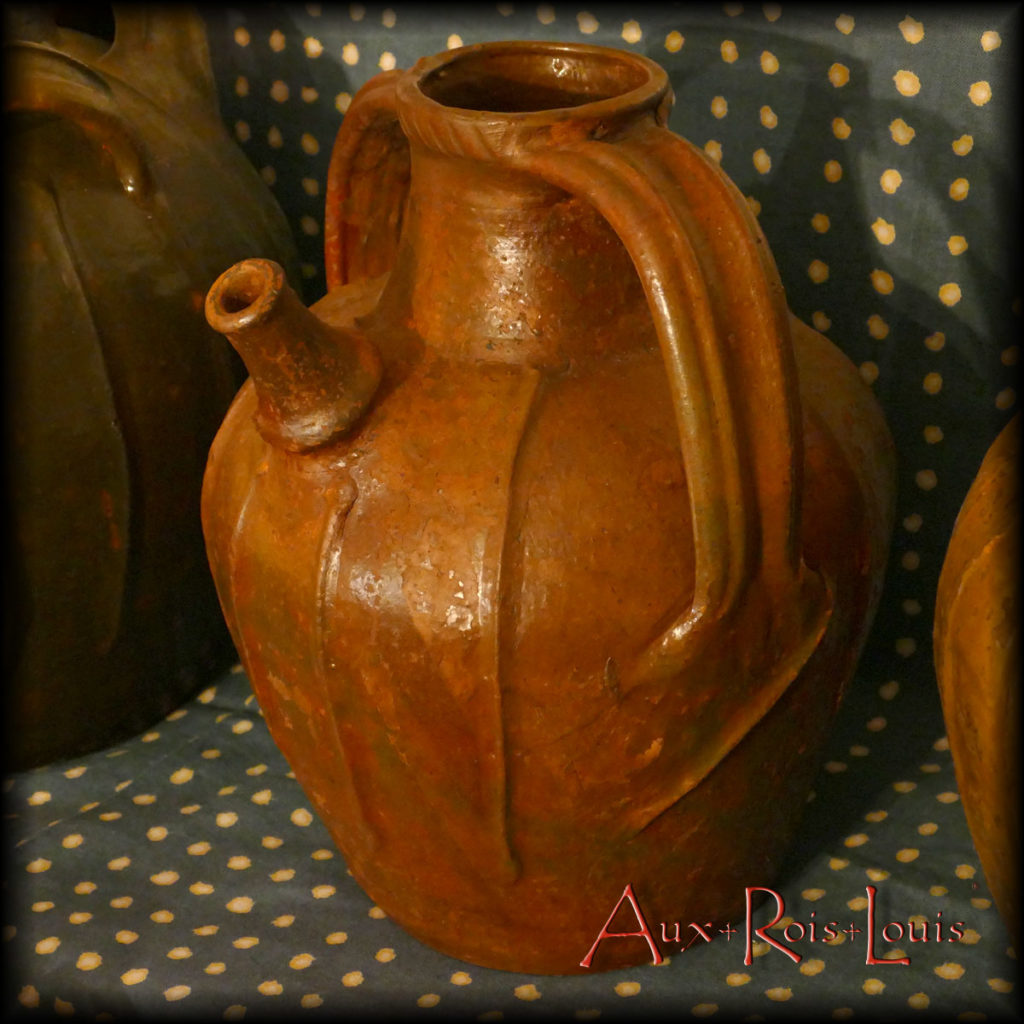
![Vaisselier dresser-drainer in cherrywood – 19ᵗʰ century – South West – [MP019]](https://www.aux-rois-louis.com/wp-content/uploads/2021/04/MP019_P1600496.jpg)
![Oval walnut cellar table – 18ᵗʰ century – Lot – [MP017]](https://www.aux-rois-louis.com/wp-content/uploads/2021/02/MP017_P1600257.jpg)
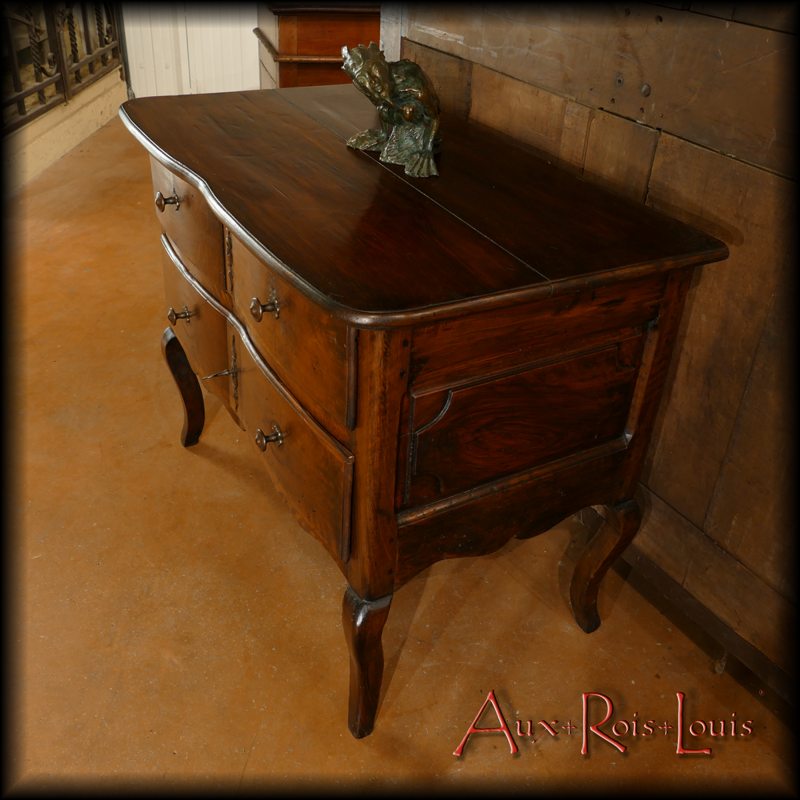
![Renaissance style chest in walnut - 17ᵗʰ century - Périgord - [ME051]](https://www.aux-rois-louis.com/wp-content/uploads/2021/04/ME051_P1600475.jpg)
![Mazarin desk in walnut - Louis XIV - South West - [ME049]](https://www.aux-rois-louis.com/wp-content/uploads/2021/02/ME049_P1600325.jpg)
![Cherry wood sideboard – Louis XV Regency – 18ᵗʰ century – Aveyron – [ME047]](https://www.aux-rois-louis.com/wp-content/uploads/2021/01/ME047_P1600242.jpg)
![Louis XVI walnut chest of drawers – Late 18ᵗʰ century – South West – [ME045]](https://www.aux-rois-louis.com/wp-content/uploads/2021/02/ME045_P1600266.jpg)
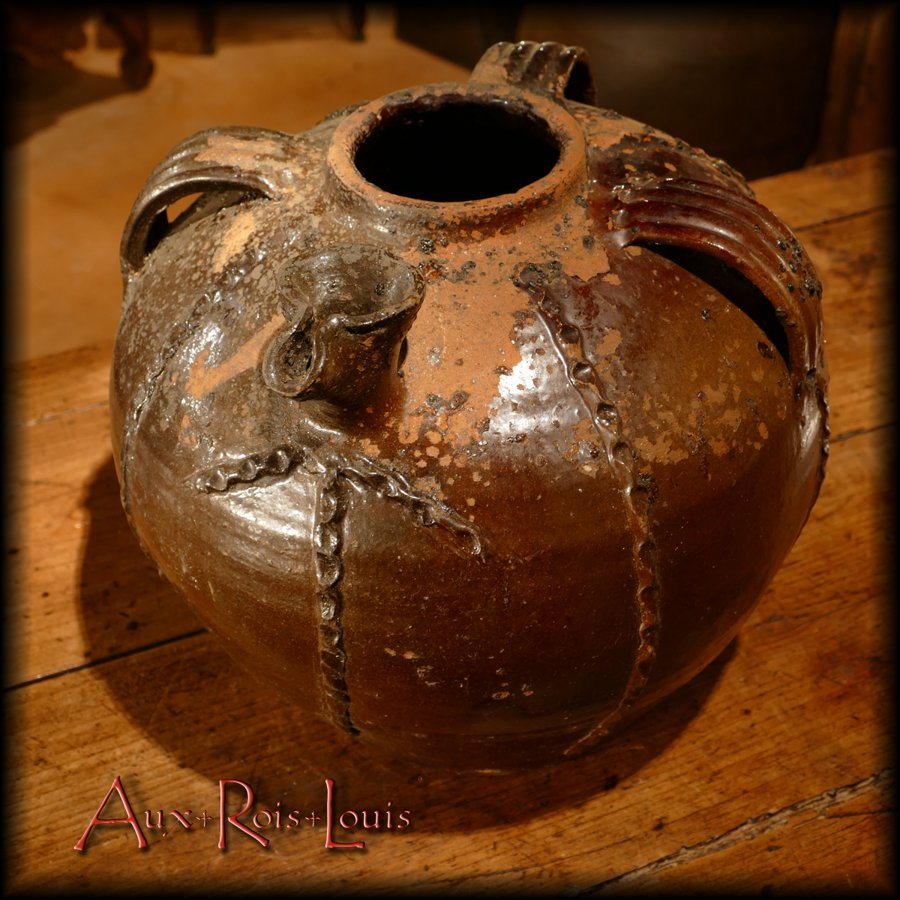
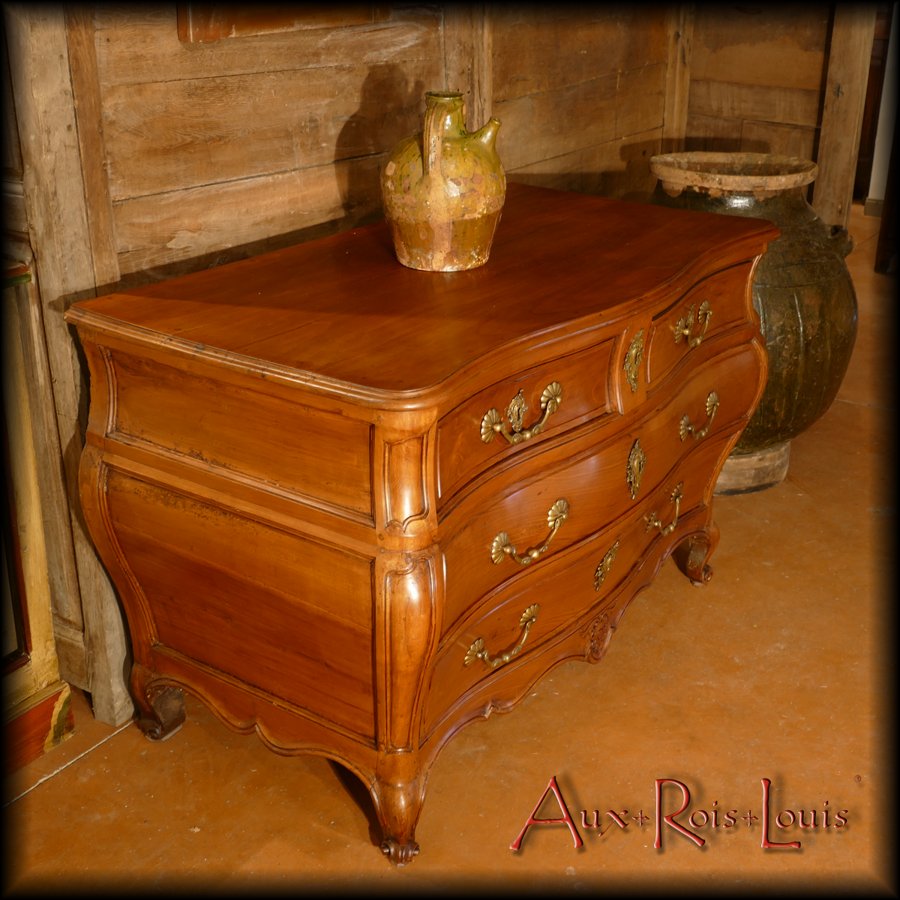
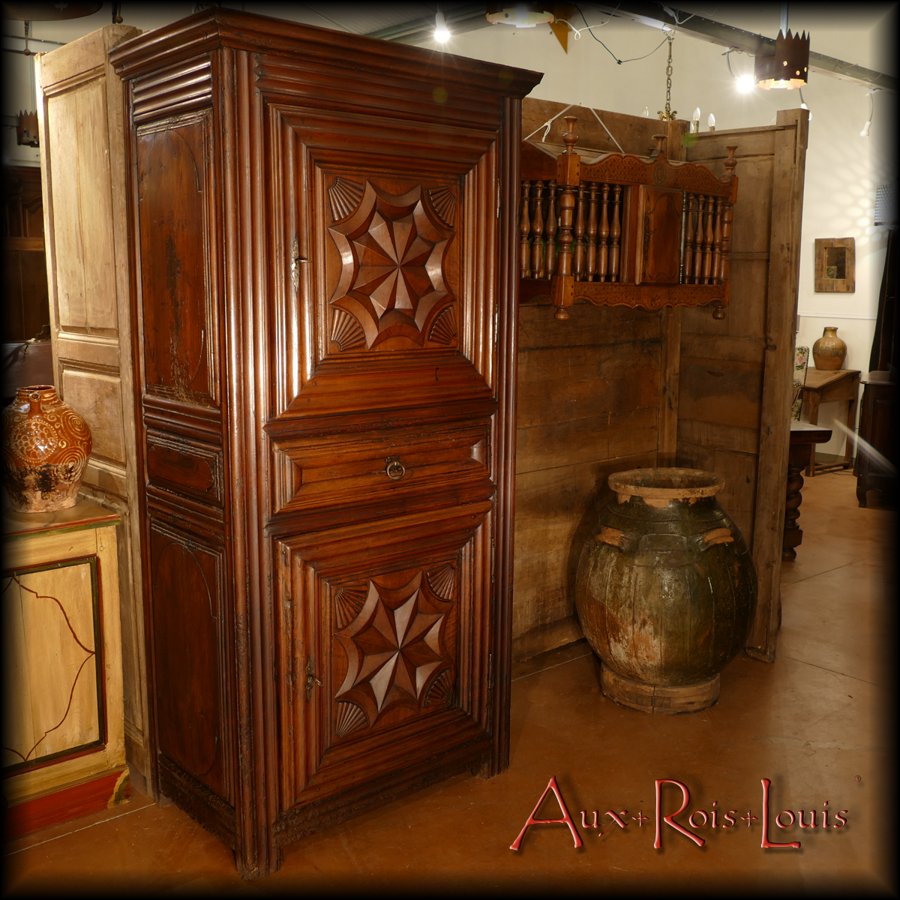
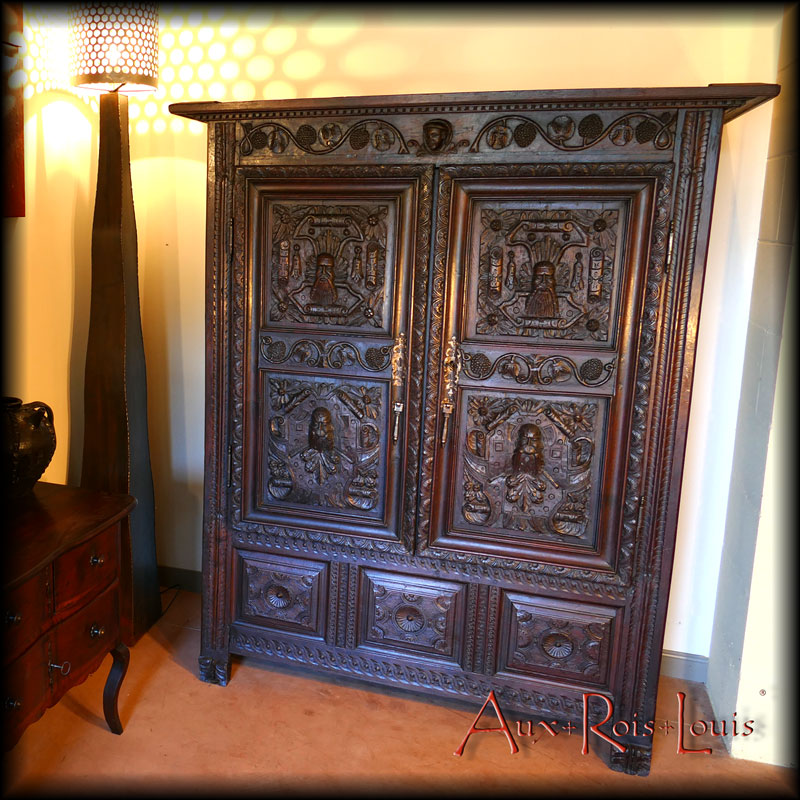
![Louis XVI walnut chest of drawers – Late 18ᵗʰ century – Sud-Ouest – [ME039]](https://www.aux-rois-louis.com/wp-content/uploads/2020/11/ME039_P1600103.jpg)
![Mazarin desk in walnut, oak and pear – Louis XIV – 17ᵗʰ century – South-West – [ME040]](https://www.aux-rois-louis.com/wp-content/uploads/2020/10/P1600115c800.jpg)
![Curved chest of 4 drawers in walnut – 18ᵗʰ century – Rhône Valley [ME038]](https://www.aux-rois-louis.com/wp-content/uploads/2020/09/ME038_670.jpg)
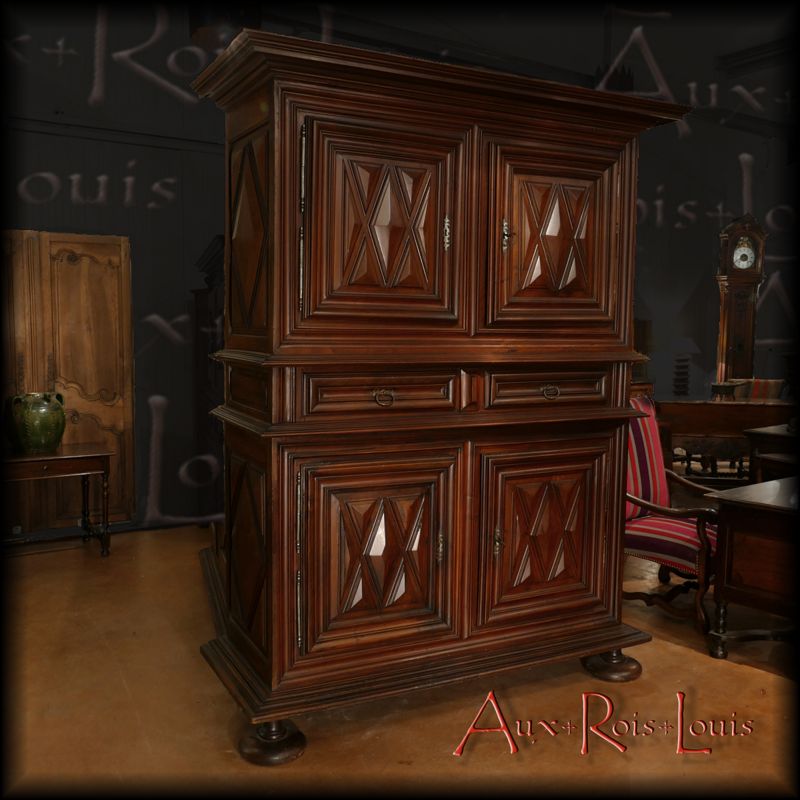
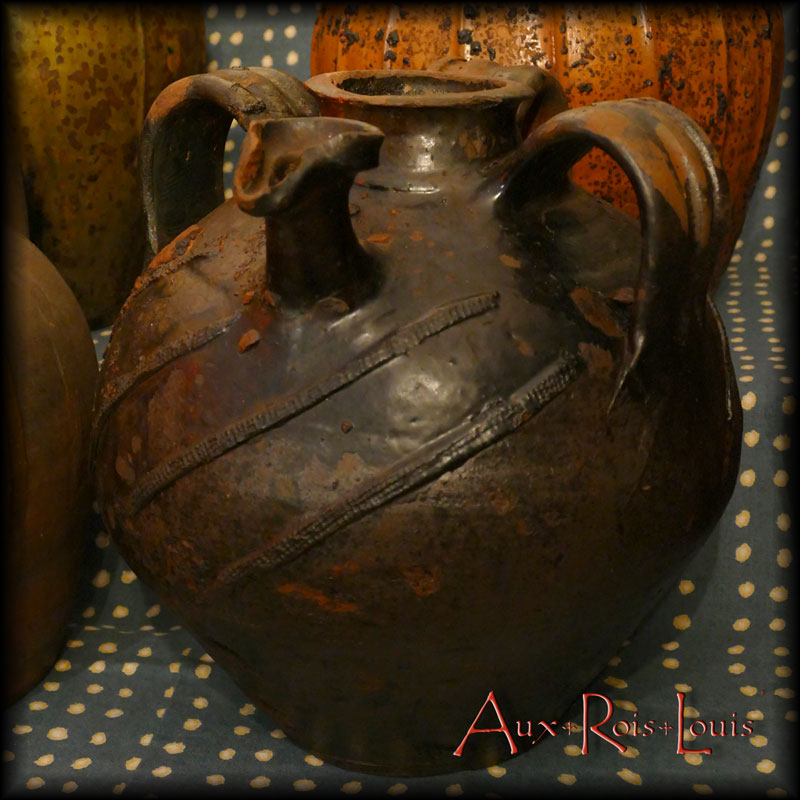
![18ᵗʰ century cherrywood commode – South West of France [ME008]](https://www.aux-rois-louis.com/wp-content/uploads/2017/07/ME008_N08_P1350598c.jpg)
